#where does the iditarod start
Explore tagged Tumblr posts
Note
hey! i’m wondering what your thoughts are on the changed iditarod starting point this year? i came across some posts about it on accident and was kinda shocked that sled races can run over sections with no snow at all. is it typical for there not to be enough snow other years as well?
It's become quite common for Iditarod to change the start location (they do a different route on and off every other year anyways), but climate change has affected dog sled racing so Anchorage especially does not often have enough snow for the amount of strain many large dog teams put on a trail. They will often have to bring snow in to Anchorage for the ceremonial start (and we have had a ceremonial start for years with a different location to the actual starting point of the race because of climate issues for YEARS). Although, I know this year in Alaska has been especially poor in the snowfall department...
It's also quite common for sled races to run across areas without snow. For longer distance races this can be especially challenging because of the weight of the sleds, but in sprint-mid distance races where road crossings are quite common you're going to have sections where you kinda just have to sit back and know your runners are going to take a beating on the pavement for a minute. It's not ideal however, I think every winter musher I know would prefer to have good snow coverage (dryland is a different story).
#dogblr#dog sledding#faq#iditarod#it's more and more common every year#SO many sled races this year in the lower 48 and canada have had to be delayed or canceled#becuase of lack of snow#in the last....7 years? the local race near me has only run twice
27 notes
·
View notes
Text
Our favorite photos from the Iditarod ceremonial start in Anchorage
New Post has been published on https://petn.ws/HaouT
Our favorite photos from the Iditarod ceremonial start in Anchorage
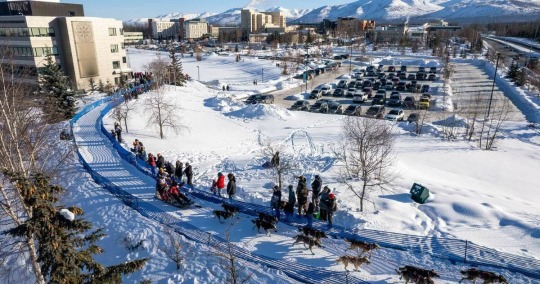
Mille Porsild, from Denmark, makes the Cordova Corner during the ceremonial start of the 2023 Iditarod Trail Sled Dog Race in Anchorage on Saturday, March 4, 2023. (Bob Hallinen Photo) Under bluebird skies Saturday, the 33 mushers competing in the 2023 Iditarod Trail Sled Dog Race drove their dog teams along city streets and wooded […]
See full article at https://petn.ws/HaouT #DogNews #AlaskaSledDogRace, #AnchorageIditarod, #HowToWatchTheIditarodStart, #IditarodCeremonialStart, #IditarodCeremonialStartAnchorage, #IditarodPhotos, #IditarodStartPhotos, #WhatIsTheIditarod, #WhereDoesTheIditarodStart
#alaska sled dog race#anchorage iditarod#how to watch the iditarod start#iditarod ceremonial start#iditarod ceremonial start anchorage#iditarod photos#iditarod start photos#what is the iditarod#where does the iditarod start#Dog News
0 notes
Photo
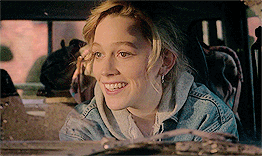
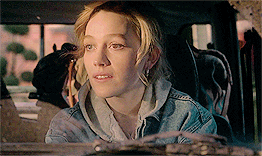
( victoria pedretti, 24, cis woman, she/her ) i think i just heard someone humming KRYPTONITE by 3 DOORS DOWN, must be STELLA DE ROSE walking about. Rumor has it they’ve lived here for TWENTY YEARS and work as a TRAIL GUIDE/MUSHER + DOG SLEDDING. In their spare time, they love going to COW’S CREAMERY and the LIBRARY. I hear ELLA can be COURAGEOUS, but on their worst of days, they can also be IMPULSIVE. Still, they remind me of CHERRY FLAVORED LIP BALM & VANILLA SCENTED LOTION, BARKING DOGS, AND EARLY 2000s ROCK ANTHEMS. Can’t wait to see what they have in store for us.
Hi! I’m Sunny. I prefer she/her pronouns, and I’m 32. I’m so excited to be here & rp with everyone! This intro has taken me [insert titanic.gif] 84 years to do, because I pretty much move at the pace of a sloth. I plan on getting a more detailed bio up at some point, as well as a plot/wc page, but I wanted to have a starting point. I’ll make a post in the discord, if anyone would like to plot!
BASIC INFORMATION
(TW: Alcohol Mention, Sledding Accident)
NAME: Stella Beatrice De Rose NICKNAMES: Ella, Bea, Dog Lady, Togo (by her Grandfather) DATE OF BIRTH: March 23, 1996 AGE: 24 HOMETOWN: Anchorage, Alaska, US CURRENT RESIDENCE: Whistler, BC, Canada PRONOUNS: She/her SEXUAL ORIENTATION: Bisexual OCCUPATION: Musher/Tour Guide with her family’s Dog Sledding Business, De Rose Dog Sledding LANGUAGES: English, Italian PARENTS: Alberto De Rose [Father]; Sarah De Rose [nee Kilcher] [Mother] BROTHERS AND SISTERS: Leonardo De Rose [Older Brother] RELATIONSHIP SKILLS: Stella can be an absolute sweetheart. She tries to be kind to everyone she meets, but she’s not afraid to defend herself in any situation that makes her uncomfortable. She knows the job she does can be dangerous, so when it comes to keeping her clients on track, she can be stern, but it’s because she doesn’t want to see anyone or the dogs get hurt. She’s loyal and would be there in a heartbeat for anyone that needs her, and sometimes it leaves room for people to take advantage of her. But she’s not someone you want to make angry either and can hold a grudge with the best of them.
PHYSICAL CHARACTERISTICS
HEIGHT: 5′3″ HAIR COLOUR: Brunette, sometimes blonde. EYE COLOUR: Blue DISTINGUISHING FEATURES: Stella’s most distinguishing feature is her eyes. They say the eyes are the window to the soul, and while her baby blues do often make Stella seem sad, the twenty-four year old can usually be found gracing those around her with a soft smile. DRESS STYLE: Stella dresses for comfort. Her favorite clothes are vintage t-shirts, oversized sweaters, and anything that’s comfy and snuggly, including hoodies. However, when she’s outside working, she wears layers for warmth, but also things she can easily move around in. She has a favorite pair of gloves her grandmother gave to her and a really nice pair of snow goggles. A more descriptive list can be found here. PHYSICAL HABITS: Stella will have the occasional drink, but not in excess and not very often. Her drink of choice is usually the hard stuff. MANNERISMS: Stella is bad about biting her nails and chewing on her bottom lip when she’s nervous or thinking. You can see her quite often putting on Chapstick on her lips or lotion on her hands, where they stay dry and cracked from being out in the cold so much. She often checks and rechecks her sleds to the point of it almost becoming an obsession, but it’s just because she’s seen what can happen when things aren’t properly hooked up. She also keeps a close watch over her dogs. They’re her family, and if one of them goes down, she’s right there at his/her side, until they’re up and going again. HEALTH: Stella has had several injuries growing up in a family that owns a sled dog company. The worst was a pretty bad break to her right arm after she was thrown off of her sled rounding a turn. Otherwise, she’s in great physical health. She exercises regularly and tries to eat a balanced diet. She does have a weakness for Cow’s Creamery though, especially their Chocolate Chip Cookie Dough in a fresh made waffle cone.
HEADCANONS
Stella was born in Anchorage, Alaska, where she gained her first experience with dog sledding at her grandparents house. But her parents, wanting to branch away, decided to move to Whistler and open their own dog sledding business, De Rose Dog Sledding, when Stella was four years old.
Stella’s grandfather gave her the nickname Togo, when she was 3, after the famous husky that helped to deliver diphtheria antitoxin serum to Nome, Alaska in 1925. Most people know the story of Balto, but she insisted on being nicknamed after Togo.
One of Stella’s ancestors is the famous Italian explorer Alessandro Malaspina, who helped to map out the Gulf of Alaska.
Stella and her brother, Leonardo, spent most of their childhood helping with the family business. Because of this, she knows more about dogs, their care, and what it takes to run the Iditarod Race in Alaska, than she does about current pop culture and who the latest Kardashian is dating. It’s often left her as the outcast in many situations and has left her feeling pretty lonely growing up.
She does love music though, especially Early 2000s Rock music. She likes music from the 90s and before, as well. Her dream is to one day see some of the musicians she loves in concert. And to tell them how many times their songs have helped her get through hard work days.
After Stella graduated from high school, she skipped going to college to continue helping with the family business. She works alongside her parents, her brother, and her cousin, who moved from Alaska to provide an extra set of hands. There’s also a small team that helps out at the kennel, including the veterinarian, Stella is constantly trying to shadow.
She hopes to someday attend college for Veterinarian school. While she loves being out in the snow with the dogs and taking visitors and residents on tours, she does want her work to be more meaningful.
Stella has gone out on search and rescue missions before with her dogs, after hikers and tourists have gone missing. Having grown up in Whistler, she knows her way around better than most.
More to be added later!
9 notes
·
View notes
Text
Graham McTavish: The Frederator Interview
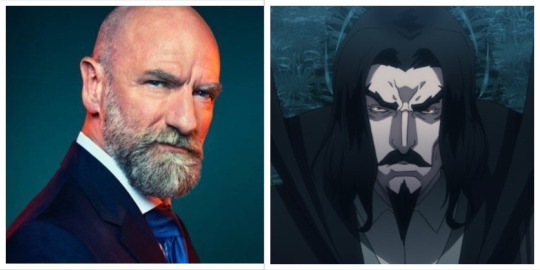
At the moment, Graham McTavish is in Malta getting his head torn off by a Werewolf. Jack Bauer once rammed a fire poker through his chest then slit his throat. He’s been set on fire, drowned, strangled, stabbed, speared, knifed, shot - not to mention, kneed in the balls, punched in the face, even slammed over the back with a log by an over-eager young performer. All in a day’s work for the Scottish actor, who’s played the baddest of baddies on a slew of excellent dramas-with-a-twist, from Preacher to Outlander, 24 to Castlevania. But Graham himself doesn’t view his characters as ‘villains’ - just passionate, complex people, of which Dracula (though he’d resent to be called “human”) is the embodiment. Read on for Graham’s take on playing one of literature’s most iconic, dangerous anti-heroes—from the relative safety of a recording studio.
Are you in LA long?
I’m flying out tonight actually, back to New Zealand. My kids are there, so I split my time. I’m doing Lucifer at the moment for Netflix as well as Castlevania, so I had to come back for a day, yesterday - I flew back just for that. (wow whaaa?) Yeah. I do a lot of traveling, but even for me that’s insane! It’s also unusual for the scheduling to work out perfectly, which it does the next few months. I have an episode gap now, then in October, I do a film in Malta, and the day that wraps, come back to LA to finish Lucifer, and the day after that, fly to Canada to do a film with Willem Dafoe about the Iditarod. I’ve got to learn how to mush a dog sled.
That’s awesome. It’s like getting sponsored to learn a cool obscure skill.
It’s definitely a nice side effect of being an actor. What other job would allow you to learn how to mush a dog sled, unless you were actually becoming a professional dog sled musher? It’ll be great.
How is it for you to switch between characters, with so little time between roles sometimes?
It really depends on your approach to acting. I approach from the point of view of a child. I have two young children, and the great thing about being that age, is they can switch from one thing to another in an instant. Very fluid. I think because I’ve never trained as an actor, I can see work as play. Some actors live as a cobbler for 5 years to play a cobbler, and that’s what works for them. Personally, I pretend. When I'm mushing dogs, I will give the illusion that I really know what I'm doing. That’s what acting is: an illusion that the audience willingly participates in. And everybody is complicit.
You didn’t have professional training?
No. I used to write comic sketches at school with a friend of mine, and we didn't trust anybody else to perform them, so we did. The Drama teacher at school asked me on many occasions to be in a play, but I always said no. Then on one occasion, he asked me to step into a play called “The Rivals” by Sheridan, filling in for an actor who’d fallen ill three days before the production was due to be performed. I said yes. To this day, I have no idea why I agreed. But I did the play, and was of course bitten by the acting bug.
After that, a local Dramatics company asked me to join them, so I did amateur theatre for a year. Then I attended Queen Mary College London University and majored in English literature. I was lucky enough to have a professor who loved Shakespeare and Jacobean drama, and he cast me in all of those plays. As an English Lit major, I was doing two or three Shakespeare plays a year, performing roles that I never would have been given if I'd been at Drama School. I'm not against it, but I don't think it's for everyone. I got my union card in Britain after doing a Beckett play, and then just started working professionally. I also did a lot of Repertory Theatre in the UK, which I think is a great training ground for actors. So it was all slightly accidental, the case with a lot of people.
How did you choose to play Dracula? What about that part compelled you?
I played him onstage once, a great experience. Dracula is the sort of character people love guiltily. If you get the opportunity to play that, it's a no-brainer. Just reading Bram Stoker’s book, your sympathy is with Dracula, in many ways. You live the story through him. It's such a wonderful ride to be playing a man whose been alive for hundreds and hundreds of years. Dracula plays to our secret desires, our secret fears. I think in all of us, there is a fascination with the idea of living forever. Fear of living forever, and fear of death; the Dracula myth plays on that edge. It’s so powerful because it takes something that we all have to face one day and says, what if you didn’t? But in gaining immortality, you lose something very important. Dracula is very enviable in some ways, but is also deeply sad and tragic.
How is it, playing tragic characters?
Among the few advantages of getting older is you have more life experience, including with tragedy. It’s inevitable. And you can draw on those memories. But you can also draw on your fears as well. I did a scene in Outlander, toward the end, where my brother is dying. I thought of my own father, and all the things I never said to him. Those emotions definitely informed that scene. When tragedy and death and loss touch your life, you carry those feelings into your future.
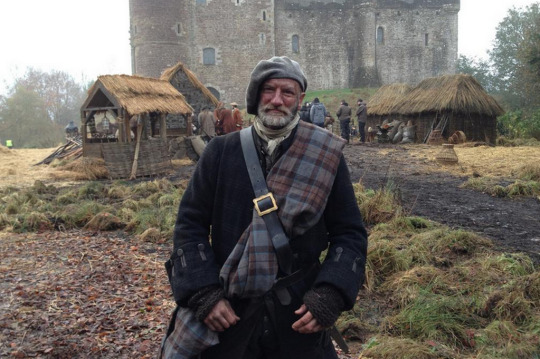
Are you an animation fan?
I love animation, I grew up with it. Along with books, it was my first experience of storytelling. Cartoons, as we called them; they fired my childhood imagination. It’s like how we were talking earlier, about children, and the profundity of animation to them. The first film I saw in a theatre was Walt Disney’s Peter Pan. I was five and had no question that those characters were real. To such an extent that when they took the posters down at the cinema, I got upset. I was like, “But where’s Peter? Where’s he gone?” Because I thought Peter lived in the cinema. I still get absorbed into great pieces of animation, when the artistry is powerful, and it’s part of my attraction to doing animated work. And this show, Castlevania, is particularly beautiful.
How were you introduced to the project, and did you have expectations going in?
I knew it was going to be great. I was recording Teenage Mutant Ninja Turtles when the Voice and Casting Director, Meredith Layne, pulled me aside. She said she was on a project and couldn’t tell me much, but she thought I’d be a fit, and would I like to be considered? Meredith has great taste, so I said “Of course” and sent in a tape. And when I heard that Warren Ellis was the writer, that was a huge attraction. I love his comic book work, and fiction as well. The Crooked Little Vein is one of my favorite books. Really, it couldn’t not be great, and the more I learned of the creative team behind it, the more sure I was. Everything put into the show - the casting, directing, producing, animation - elevates it so hugely above anything comparable. I love that it occupies this unique space.
What do you feel Castlevania’s Dracula uniquely brings to the character?
It’s his being human that makes it so interesting. When I portrayed Dracula onstage, there was no suggestion that that version of him felt love, or experienced empathy. But in this production, a woman, Lisa, takes him by surprise. She makes him feel, and turns his life around. I love that, because everybody can relate. You think your life is one way, then you meet someone who changes everything, opens your life up, makes you think about it differently - and makes it more enjoyable to be alive. And since Dracula is essentially dead, that irony is very clever.
Do you have a favorite representation of vampires in Media?
I'm a little biased, but I love the portrayal of Cassidy by Joe Gilgun in Preacher. It’s so unconventional. Herzog’s Nosferatu springs to mind, just incredible. Gary Oldman’s Dracula is wonderful. And I loved Let the Right One In, the original Swedish version. It’s genius. It took something familiar as a vampire story and gave it a whole new spin.
You work so much in the fantasy genre - is that purposeful?
Oh yeah. I love the variety. I've been a Viking, a Roman - twice - after always dreaming of playing one, I got to be one for a whole year. Growing up in the UK, you never imagine yourself getting to be a cowboy. On the first season of Preacher, there was a scene I rode into a western town: the whole duster coat with the Stetson guns, surrounded by horses and wagon trains, all the paraphernalia. I had to look cool and unbothered. I wanted to jump up and down in excitement. I was so, pathetically excited. I did a season of 24, and I’d been a huge fan. Every day I’d go up to the producers telling them I was a huge fan. After a while, they’d say, “Yeah, great, we get it. You like the show. You’re in it now, so if you could just be the character that’d be great.”
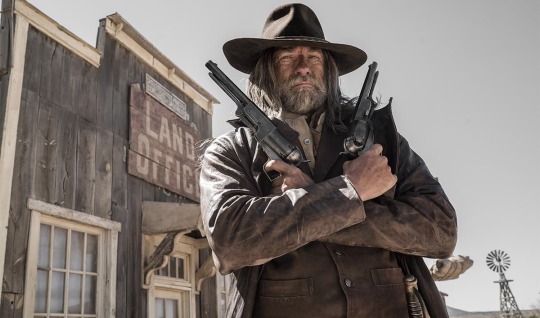
And I still get a pathetically childish enjoyment out of playing Dracula. What kid doesn’t want to play Dracula?! I once talked to Lance Henriksen, and he said one of the reasons he went into acting was to be thousands of people. You get to be a cowboy and a vampire and a dog musher and a Highlander in the 18th century and a dwarf in Middle Earth. I'd definitely rather do any of that than put on a suit and do a courtroom scene. Not that I wouldn’t! I’ve just never been asked. No one’s ever looked at me and said, “Let’s cast him as The Dad.”
Have you ever played a “Castlevania” game?
I am a terrible game player.
But, but - your voice is in like every game of the past decade!
Yes, I have done loads of video games. I did a franchise called “Uncharted”. Award-winning; incredibly popular. Never played them. I played one game years ago with my friend, called “Gears of War”. I was so bad at it. I'm the guy that shoots in a circle around his feet. I’m useless at them.
Your character's bad-assery makes up for it. Anything to say to fans of the show, in advance of season two?
I just really hope you enjoy it and get carried along with the story and and want to see more. That’s always the greatest thing, if you can get the fans to clamor for more ❀
Follow Graham on Twitter and Instagram
Thank you for the interview Graham! Without a doubt, you’re the kindest chronic bad guy I’ve come across.
- Cooper ❀
(Craving another CV interview? Read Richard Armitage’s here.)
#The Frederator Interview#graham mctavish#castlevania#castlevania netflix#dracula#outlander#preacher#24#uncharted#the hobbit#interview#actor#netflix#season 2#frederator
159 notes
·
View notes
Text
Iditapod: Rainy Pass, Race Rookies, and Rohn Axe-Throwing
[sound of an axe hitting wood]
[men cheering]
Discordant voices: Ayyy! That was it! That was it hitting the bullseye
[theme music plays]
Casey Groves: Welcome to the Iditapod! It’s a podcast about dog mushing and the Iditarod, and… axe throwing? We’ll get to that in a few minutes. But first, here’s a word from our sponsor
[ad plays]
CG: Well, my friends, since the last time we talked, the more than four dozen sled dogs teams competing in the 2019 Iditarod have mushed, or are mushing, into the mountainous Alaska range. When mushers say these are the most technical sections of the trail, they mean it is an area where mistakes can be especially dangerous, and expert sled driving is of the utmost importance.
So, the Rainy Pass checkpoint on the frozen alpine Puntilla Lake, is a spot many mushers stop to prepare for the often tough trail ahead. But, not last years second place finisher Nic Petit, who stayed only a few minutes, long enough for race officials and veterinarians to check out his team and gear. In fact, looking at Petit’s checkpoint times on Iditarod.com, he hasn’t stayed more than a few minutes at any checkpoint in the face, except for Rohn, where he stayed a whopping 20 minutes. Instead, Petit has opted, as mushers will do sometimes, to avoid the hubbub of the checkpoints and camp his team out along the trail. They pick up straw, they pick up supplies from their drops bags, and they take that along with them down the trail and just do their own thing. That’s why, after having the lead earlier in the race, severals teams passed Petit on the way from Rohn down to Nikolai. That is a village on the upper Kuskokwim River, roughly 250 miles into the 1000 mile race.
While Petit rested from Rohn to Nikolai, the race GPS tracker shows the defending champ, the Norwegian by way of Willow, Joar Leifseth Ulsom, passed Petit’s team, as did several others, including Bethel’s Pete Kaiser, Montanan Jessie Royer, and Two River’s musher Aliy Zirkle. Ulsom was the first to arrive in Nikolai a little after 6:30 Tuesday morning. And, remember, the race just started Sunday in Willow with the race clock ticking, at the restart, so they’re covering a lot of ground here very quickly, as they do. And we’re looking forward to hearing more about how it went for the team’s runs from Rainy Pass to Rohn and Nikolai. While the race reached Nikolai Tuesday morning, we’re going to go back to Rainy Pass, where as Iditarod mushers make their way over the Alaska range, they find the last checkpoint for supplies and a rest at the Rainy Pass Lodge on Puntilla Lake. As Alaska Public Media’s Zachariah Hughes reports, it’s a good place to pause, maybe reflect, and definitely to prepare before heading towards the most technical sections of the trail.
[sounds of dogs and supplies moving]
Zachariah Hughes: Sarah Stokey pulls onto Puntilla Lake with a team of dogs that has been gradually climbing the Alaska Range.
Sarah Stokey: Hi
Unknown Voices: Bib number?
SS: 52
Voice 1: Perfect. We’re going to give you your bags here
Voice 2: Are you going to stay or are you going to rest? SS: I’m going to stay
V1: She’s gonna stay, ok
ZH: Stokey grabs three heavy drop bags full of supplies, and parks her dogs for a rest. She’s in good company, except for Nic Petit and Pete Kaiser, who flew through mid-morning, almost all of the teams at the front of the pack are taking a break. Checkpoint at the Rainy Point Lodge has a festive atmosphere. Frozen lake is covered with planes and helicopters that bring tourists for day trips, the rustic wooden building is ringed with picturesque mountain peaks. It’s not where Matt Hall would have chosen to stop, but he wanted a veterinarian to check out a dog’s toenail problem.
Matt Hall: Little noisy, but they rest good.
ZH: Hall came off the Yukon Quest a few weeks ago, and likes camping out with his team beyond the hubbub of checkpoints, but he knows that enough teams are likely to stop here that he can keep toward the front of the pack.
MH: It’s definitely an advantage, being toward the front early on, just because of that, you know, you get 20,000 dog feet over it, and 50 sleds, and it starts getting softer and softer, then as the heat of the day comes on to.
ZH: Hard packed, smooth trail that gets punchy and pulverized after heavy traffic is slower and more effort for the dogs. In the cool, early hours before many mushers had gone over, Linwood Fiedler says the trail heading up toward the Rainy Pass checkpoint was something to behold.
LF: I don’t think I’ve ever seen it better. It’s certainly one of the best trails ever. Yeah, I mean, it’s the Iditarod trail, but boy it’s pretty good shape.
ZH: Fiedler also wants to take advantage of the midday warmth, rest his dogs while the bright sun and relative warmth soften the trail.
LF: It’s just gonna get warmer and warmer and warmer, when it’s like this, 5 degrees, going up makes a huge difference. I mean, it’s just, you can just see that team kind of wilt [laughs] I mean, they’re like a car with no antifreeze in the radiator
ZH: After the lodge, the route keeps going up, until it hits Rainy Pass itself, it weaves back and forth, over a river, enveloped by steep mountain peaks on both sides. This year, trail crews had to build 20 bridge crossings over sections of open water. From Puntilla Lake, it’s 35 miles up and through the pass to the Rohn checkpoint. It’s a kind of dog driving that requires some finesse.
Jessie Royer: I’d have to say, my team is pretty controlled anyways.
ZH: Jessie Royer is in a good mood as she straws her dogs. It’s not just the pass that’s challenging, she says, what follows is the drops and turns of the gorge, and the bumps of the tunnels. Royer’s approach is to rest and charge her dogs, before embarking on the hours over the pass, but keep them moving, winding down their power, until all the technical stretches are behind them.
JR: I don’t stop until we get out of it all, so I do it all in one run. Cause otherwise, if you don’t if you stop in Rohn, you’re leaving with a fresh team right away on the buffalo tunnels, which is even worse. Buffalo tunnels is always worse than the gorge.
ZH: It’s a stage in the race when there’s strategy not just in reading the trail, but in using a dog teams relative restedness or fatigue to help navigate perilous terrain. From the Rainy Pass Lodge on the Iditarod Trail, I’m Zachariah Hughes.
Casey Groves: So between Rainy Pass and Nikolai, is the checkpoint of Rohn. To get there, the teams navigate some pretty treacherous sections, reaching the races highest elevation of 3,160 feet. I mean, it’s a mountain pass. You’re going on some pretty narrow trail, and there’s mountains and ravines, there are twists and turns, ups and downs, there’s some mushing on the edge of the ravine - it’s intense. If you want to get a look at it, I encourage you to google “Jeff King Dalzell Gorge”. The first video that should come up is from a very low snow year in 2014. Those sections of trail destroyed some sleds and destroyed some mushers dreams of reaching Nome that year. I first saw those sections of trail that same year, in 2014, from the safety of a helicopter. That was my rookie year on the Iditarod. But as a rookie, in the race, it must be daunting to hear the stories and then finally get up into the pass and see what you got yourself into. And, Jeff King’s a four time champion. He’s very experienced musher. He’s run the Iditarod as much as anybody competing in the race these days. But, in addition to the really competitive slate of mushers in this year’s Iditarod, which includes five past champions (King, one of them), nearly one in five Iditarod mushers this year is brand new to the race. As Ben Matheson reports, the ten rookies each set out on the trail with a deep range of skills and experiences.
Ben Matheson: 21 year old Martin Apayauq Reitan is coming off of Yukon Quest, in which he took home Rookie of the Year honors. But, he had a tough time managing his sleep during the race, something he wants to improve upon in his second 1000 mile race.
Martin Apayauq Reitan: We need to have a good time, and we’ll see if I’ll be able to race or if I’ll oversleep again, and then, you know, I’ll have to adjust my expectations, but I’ll try my best and have fun.
BM: Reitan lives on the north slope of Kaktovik, where, among other things, he guides polar bear viewing expeditions. After the race, he’ll skip the jet and instead mush his team north, to Kotzebue, where his dad will run the Kobuk 440. After that, it’s hundreds of miles north to and to the east, to Kaktovik, the same epic trip he made two years ago with his dad. Mushing is also a family affair for Jessica Klejka, who grew up the oldest of 7 kids running dogs in Bethel. Her passion for mushing also overlaps with her professional life - she’s a veterinarian. But Klejka says her professional knowledge can cause her to overthink things with her dogs.
Jessica Klejka: And so I see something happen and, you know, like if I toss a dog a piece of fish and he doesn’t eat it right away, I start going okay wait, what’s going on, why doesn’t he want to eat the fish. And I start smelling the fish, like is it okay, and - but for the most part I think it’s very advantageous because I get a lot of calls from mushers the last few weeks before Iditarod, asking a lot of questions, and it’s kind of fun.
BM: For more than two decades, Ed Hopkins from Tagish Yukon Territory, has been running the Yukon Quest, notching several top five finishes. But, after watching his wife, Michelle Phillips, running the Iditarod in recent years, he says the Iditarod temptation became hard to ignore.
Ed Hopkins: Actually, you get the itch, and I got the itch
BM: His team has already completed a 1000 mile race this year. Phillips ran the team to a 4th place finish in the Quest last months. Hopkins says the race-hardened dogs know more about the trail than he does.
EH: I’m a rookie in a lot of senses, like I don’t know some of the little hidden things that are out there that give advantage to a lot of other people, so, I’m just gonna go and do my own thing pretty much.
BM: Norwegian Niklas Wikstrand has worked with Pete Kaiser in Bethel for a few years, and gotten his race experience in brutal, Kuskokwim river conditions, and he’s been on a specific schedule to get the dogs the right racing experience.
Niklas Wikstrand: Going a little slower, rest enough, and that’s our teams main goal, to rest and run quite conservative, and make sure that as many dogs get to Nome, and just keeping the dogs happy and healthy.
BM: As the rookies navigate the races most technical and steep sections in the first couple days in the race, they’ll be one step closer to joining the elite club of Iditarod finishers. I’m Ben Matheson, in Anchorage.
Casey Groves: These rookie standings are definitely subject to change as teams leapfrog each other here in the race. At least check, Ed Hopkins was leading the rookies in 32nd place; then Richie Beattie in 34th; Sebastien Dos Santos Borges in 37th. There’s Jessica Klejka, who we just heard from, in 38th place; Niklas Wikstrand in 41st, Blair Braverman in 42nd, Ryan Santiago in 46th, Alison Lifka in 47th, Martin Apayauq Reitan in 48th, and bringing up the rear, in 52nd place, Victoria Hardwick.
At least check, all the rookies in this years race still yet to reach the checkpoint of Rohn, and I want to mention Rohn real quick. It’s not really a community or anything, they’ve listed it at population zero, it’s basically just a cabin or a roadhouse they call it, and definitely the population swells when it’s an Iditarod checkpoint. They’ve got veterinarians there to checked the dogs, they’ve got race officials - and of course, they’ve got mushers coming in. And, different Iditarod checkpoints have totally different flavors. Some are hectic, full of visitors and volunteers; others are literal ghost towns, nestled quite deliberately in the middle of the wilderness.
The Rohn checkpoint is the latter, with hardly any amenities or distractions. The volunteer staffers have to find ways to amuse themselves, in the lulls, when there are no mushers - it might be a little boring, they’re trying to entertain themselves. This year, as Alaska Public Media’s Zachariah Hughes found out, they are throwing axes.
[sound of an axe hitting wood, men cheering]
Men’s voices: Aha! That was it? That was the bullseye, dead center, that’s perfect!
Zachariah Hughes: Like, what’s the right technique for doing it? Like, when you’re giving someone an introductory lesson, how do you explain it?
Man’s Voice [Unknown]: Uh, normally I ask, you know, right or left handed. If you’re right handed, you want your left hand on the bottom, right hand on top, you know I try to keep everything in a straight line and use your whole body.
ZH: What are you guys doing right now? MV: Axe throwing? Yeah, we’re axe throwing
[sound of an axe, throwing]
MV: [loudly] Yeah! That was it, that was perfect
ZH: The Rohn checkpoint is mostly just a cabin, it’s in a clearing in a pretty wooded area, just after the Dalzell gorge, near a river, they’ve got some arctic ovens set up, some snow machines, there’s an outhouse, but - mostly it’s a one room cabin from 1910 that the Parks Service maintains. Nowadays, it’s a shelter cabin.
Woman’s Voice: We find something to do, we tell our stories
ZH: Throw weapons
WV: Well, we don’t allow guns out when the mushers are here, but pre and post race we do a little target shooting. But, I asked Mark to bring an axe, because I’ve always wanted to do this. I’ve never done this before.
ZH: Oh, and you guys knew each other before this?
WV: I met him last summer at the lumberjack show.
ZH: Mm.
[sound of axe thudding]
ZH: The volunteers here have to be a little bit more hardy than at other places, because they’re left out here mostly unsupported, it’s basically camping.
WV: Well, there’s nobody lives here year round, so we all come out for Iditarod, because we like dogs, we like going to remote places in Alaska, meeting people from all over, and it’s a satisfaction of helping people get down the trail, whether it’s snow machining, or walking, or mushing dogs, so it’s a good camaraderie feeling of Alaska.
ZH: Do you like throwing the axe? WV: Yeah, it feels good. You should give it a try.
[sound of axe thudding, woman yells “nice!”]
Man’s Voice: And when you release, you want kind of to release high so the axe carries down into the target, because it’s heavy
ZH: Do you guys always do this every year, out here? MV: This is my first year, so no, I don’t think so? But maybe from now on [laughs] I got started in college as a collegiate sport, so it’s called the woodsmen’s team in college, and so I competed collegiately. Me personally, I ended up doing well enough at the end of my four years, I was able to go pro, and then I competed professionally and also did lumberjack shows.
ZH: Is that what brought you up to Alaska?
MV: Yeah, I did a show for Great Alaska Lumberjack Show in Ketchikan Alaska, I did that for four years, one of my good friends, Tina Sheer, owns a show in May, and she’s the one that did a show at the Alaska State Fair, and she’s actually worked the Rohn checkpoint too, in the past.
[axe thuds]
Casey Groves: I still have a lot of questions about Zach throwing axes. And, that’s a contrived segue to today’s listener question! It’s actually two related questions in Aaron Knight’s language arts classes out in Unalaska
Alyssa; My name’s Alyssa, I’m also from Unalaska, and my groupmates are Michelle, Natalie, and Alyssa-Marie, and our question is have any of the mushers got hurt, and did they have to stop participating in the race?
Aaron: Hi, my name is Aaron, my groups are Matius and Zach, what happens if the dogs got hurt?
CG: Thanks for listening, and thanks for the great questions everybody. So, what happens when there are injuries on the trail? Here’s our trail reporter, Zachariah Hughes, with the answer.
Zachariah Hughes: If the dog’s hurt, his or her musher will leave it at a checkpoint. The veterinarians take care of it and the Iditarod takes over, they’ll take groups of dogs who are hurt, or dropped, or sick, and move them back to Anchorage, or somewhere where a handler or somebody who knows the musher picks up the dog and takes care of it for a while. Mushers, unless they’re really really hurt, will keep going. One time, Aaron Burmeister broke his knee coming down the Dalzell Gorge, and he finished the Iditarod hundreds of miles later, limping over the finish line, but he made it. So, other times mushers will fall of their sleds and crack ribs and maybe withdraw or maybe keep going, they are pretty tough and it’s really up to them, if they’re hurt, if they want to keep trying to finish the race.
CG: Thanks for getting that answer to us Zach, and as always I want to remind the listeners that you can send your questions to [email protected]. The best way to do that and maybe get on the podcast is to open up your smartphone, find that voice memo app, record your question in your own voice, and send that to [email protected] and that’s the best way to get your answer. Well, everybody that’s all the time we have for today, our theme music is by the band Sassafrassh, I’m your host Casey Groves, and until next time - happy tails.
Linwood Fiedler: You just gotta be ready to be game on and not be sleepy [laughs] so.
ZH: How are you gonna do that?
LF: How am I gonna do that? I’m gonna try and take an hour nap here. [laughs]
ZH: Out here, like in the sled bag?
LF: You know, I may lay down with them, or I guess there’s a little cabin we can get in if we want.
ZH: But you don’t have like an exoskeleton for the gorge?
LF: [laughs] No. My head hits a tree, is what’s gonna happen.
ZH: Well I hope you make it out in one piece, thanks a lot man, take care
4 notes
·
View notes
Text
How do you even make a dog pull if they don't want to, let alone for a long distance race? The dog has to want to participate to start with.
Are there some mushers who might let their dogs go too far and get injured? Sure. Those individuals are a problem. People also get injured or even killed by pushing themselves too hard for work or sport and nobody reined them in. Marathons are literally named after an event where a man ran himself to death.
It can be done safely, and responsible Mushers drop out dogs with health concerns or just drop out entirely. That's a good thing! That's why there are vet checkpoints! That most dogs do not complete the race is a good thing! It means we know when a dog may be past their limits and needs to stop for their own safety, even if they would like to keep going.
Also, the thing about dogs dying every year does not mean they are dying because of the race itself. In 2016, a dog died because a man was driving a snowmobile drunk, intentionally trying to cause harm, and crashed into two dog sled teams, killing one dog and injuring others.
That now ARAs are saying that dogs are dropped from the race in order to obfuscate something sinister is a pretty wild claim. The dogs are protected from hurting themselves in order to hide something? That doesn't add up to me. Could it not be that it's actually a real safety measure?
Are there unethical mushers? I'm sure. There are individuals with welfare problems in every kind of animal sport and care. I've seen someone in an agility class grab their dog by the collar and swing them around as punishment, there's an issue with e-collars and gun dogs, etc. The problem is the individuals, not the sport as a whole. I wouldn't be surprised there's aspiration pneumonia associated with dock diving just as there is with the Iditarod, but dock diving is not constantly checking for it. Of any dog sport, I think dog sled races get the most veterinary checks involved - part of that is also finding more injury than you will in other dog sports, because there is more scrutiny. If you had vet checks leaving the dog park, how many injuries would you find?

Apayauq Reitan - the first Indigenous trans woman to compete in the Iditarod
Photo by Shan Cole
My FB page is all about her today! Let's celebrate an important moment in mushing history!
34K notes
·
View notes
Text
Born to Run
For the @sidgeno-fluff-fest prompt of puppies. Entirely 100% because I spend a lot of time following Blair Braverman and Quince Mountain on Twitter. Musher Twitter is fun!
The snow crunches under Sid’s boots, the sky still dark and the stars heavy above. The sun won’t rise for another hour, but by then the dogs will all be fed and ready to go. He can hear Geno in the barn, whistling tunelessly to himself as he gets the sled ready.
“Hey babies,” Sid murmurs as he scoops a mixture of meat broth and kibble into the first bowl he comes to - Gretzky’s since his house is closest to the barn. “Time to rise and shine.”
A few of the dogs are already out of the houses, whining for their breakfast. Manon is singing. The yearlings are the slowest to wake and Sid reaches into the house to scratch Masha under the chin. “Come on, precious. Time to get up and eat breakfast. You’re going on a run today.”
They all want to run, every last dog, and Sid hates when they have to leave any of them behind. Soon they’re all fed and jumping around on their leads, howling and ready to go. Geno’s got the sled out and packed for today’s run. The Canadian Challenge is three weeks away and Geno’s got to do a hundred miles today.
They work in unison, getting the booties on the dogs who are running today. The older dogs are a little better at standing still than the younger ones. Flower still dances around like he’s a yearling even though he’s 8 and has been running on Sid and Geno’s teams his whole life. The whole goalie litter is a little crazy. Manon is the only one who can be trusted which is why she’s Geno’s lead dog.
The sun is just peeking over the trees when the dogs are all hitched to the sled and Geno is ready to go. Manon and Masha are leaping and howling in front.
Geno taps Sid in the chest and they do their handshake. Sid gives him a kiss and Geno slaps him in the ass, making Sid laugh.
“Love you,” Geno says roughly, one of the first things he’s said that morning. Sid reaches up to pat his face once more with a thick glove. Geno pretends to bite at it.
“Go on. I’ll see you when you get back.”
Geno grins and pulls up his neck warmer before shouting “let’s go!” The dogs take off with a flying leap and the sled jerks forward. Sid watches them go until he can’t see them any longer. He stamps his feet a few times and then turns back to the dogs left in the yard. There’s work to be done.
Sid’s 18 when he meets Geno, shaking hands with him, snowblind from the glacier and half asleep from the time change between Norway and Alaska. It’s Geno’s third summer on the glacier, giving tourists a taste of Alaska without any of the mess. Sid’s not quite sure what he’s doing here. He just knew he wasn’t ready to go home.
He’s got a team of twenty dogs of his own and he loves each and every one of them immediately. He takes his time getting to know them, feeling them out as best he can even though he’s got to start giving tours the next morning. Geno gives him tips on which dogs are the best in lead, which work best as wheel dogs, which ones are lazy.
Sid thanks him and Geno grins at him, wide and warm and Sid feels like he made the right choice.
The first day is long and exhausting and when the evening comes, Sid’s arms and legs feel like rubber. His throat is sore from talking and his lips are cracked. All the dogs are rubbed down and fed and taken care of. All he wants to do is go sleep forever.
Geno catches him though and grabs Sid’s arm. “Come. Have to eat.”
Sid wrinkles his nose and shakes his head. “I would rather get some sleep.”
“Have to eat,” Geno insists. “Can’t take care of dogs if don’t take care of self. Food is first. Then sleep.”
Geno shoves him into the meal tent and Sid meets the rest of the mushers and handlers. There’s only thirty people on the glacier at any given time, thirty people, two hundred dogs, and an ever-changing landscape of ice. It probably won’t hurt to listen to Geno and eat.
A few days later, Geno’s sitting next to him as Sid repairs a harness and Geno’s sipping tea from a thermos. It’s as quiet as it gets on the glacier, dogs are barking, people are talking.
“Want my own team someday,” Geno says after a while. “Don’t really like this.”
Sid looks over at him and nods. “Yeah, I want to race.”
“My family think I’m crazy,” Geno laughs, shaking his head. “They say, spend all my time with dogs. Like cold too much. Never go home to Russia again.”
“You can run dogs in Russia,” Sid points out, smoothing the harness before putting it aside.
Geno sips his tea. “Can. Could never be in love in Russia so I stay in US or Canada. They understand that, just not dogs.”
“Oh,” Sid looks at his knees. He wiggles his toes inside of his boots. They’re warm and cozy. He gently knocks his shoulder into Geno’s, layer upon layer. “Same. But my parents understand about the dogs.”
Sid’s a writer as well as a musher and he spends his post-chore time working on an article for Outdoor Life and updating Twitter. He hates social media, but Geno convinced him that it’s a necessary evil. They have a ton of followers and they use Patreon to help defray costs to keep the team running.
People love the dogs and they love Geno so Sid mostly films them and talks about things that they do. He’s honest about the less than savory parts of their life, from picking up shit to chopping up raw meat. He posts video of Geno handing out beaver tails to the dogs after a long run.
On their 4th wedding anniversary, Sid posted a picture of them from the glacier, young and smiling, both of them with goggle tans and squinting from the glare off the ice, Geno’s arm slung over Sid’s shoulders. He’d captioned it with Happy Anniversary, Zhenya. Both he and Geno had lost hundreds of followers, gained hundreds more, received lots of hate and made it to twitter moments.
That’s kind of why Sid hates social media, but he continues to use it. Mostly he’s annoyed because he wrote a book and it’s not like he danced around the issue of Geno. He wrote about their wedding in the book. It’s a damn good book too.
Geno posts a video from the trail, the dogs running and Geno narrating what is going on, breathing heavily, but happy at the same time. Sid watches and then reposts. Callie, their only indoor cat, climbs into his lap and curls up for a nap. He strokes her with one hand as he goes over his lists for the Canadian Challenge.
Geno’s got to do this one alone since he’s using it as a qualifier for the Iditarod. No help at checkpoints, all care by the musher only. Sid can’t do anything to help once the race starts. He can prepare everything ahead of time though. Mostly he’s worried about Geno’s feet. His boots are good, but the temperatures in Saskatchewan can get down to -40.
He’s browsing arctic gear and listening to a podcast about the mating habits of elk when the phone rings. It startles Callie and she takes off, leaving Sid’s lap in a burst of fluff.
It’s Geno and Sid answers with a grin, “Hey babe.”
“Just watched Ovi shit on Shannon while we run and made me think of you.”
Sid laughs loudly and leans back in his chair. “You say the cutest things.”
“At least he not stop team to shit. Can’t talk long. Love you.”
“Love you too. Tell Shannon I’m sorry she got shit on.”
Geno doesn’t say goodbye. He never does. It’s been a rule they’ve had since that first summer on the glacier. No goodbyes. They hadn’t even been together after the first summer on the glacier and they had sworn that no goodbyes was the way to go. It works for them.
Callie slinks back over, looking put out. She climbs back into Sid’s lap and he starts to pet her again. He’s got another 500 words to write and a pair of boots to buy before lunch.
It takes them five years to buy their farm. Sid finishes school and writes a book. They work on the glacier every summer and spend too much time apart during the fall and winter, working for different mushers and volunteering at different races. They both work the Iditarod twice, but only see each other when it is over. They get married and argue about what they’re going to name their racing team.
The farm is in northern Ontario, far enough away from everything that Sid can breathe. They’re not ready for dogs right away, no matter how much they want them. They still get them faster than expected. Another musher has an unplanned litter and offers all five pups to them.
They know Cari from the glacier and the dogs’ line is good so they say yes. Geno builds dog houses and Sid drives across Manitoba to pick up the puppies when they’re ready to be weaned. They’re all adorable balls of fluff, climbing all over each other and running around the yard.
When he gets them home, they sit in the yard with their puppies running around. Sid leans against Geno’s side, watching them happily. One of the puppies comes running over, tripping over his feet and tumbling into Geno’s lap. Geno picks him up, shaking him gently before cradling him against his belly.
“So this forwards, goalies, or defense?”
“Goalies,” Sid says easily. “These are definitely goalies.”
Geno rubs the puppy’s belly lightly. “Who this then?”
“The girls are Manon and Shannon for sure. Boys are Flower, Marty, and Vlad.”
“Welcome home, Vlad,” Geno says, leaning over to press a kiss to the puppy’s forehead. Vlad wiggles away and romps back over to where his brothers and sisters are playing. Geno pulls Sid close again and kisses him softly. “Thanks, Sid.”
Sid breathes against Geno’s lips, smiling. “Thanks, Geno.”
Geno gets home late at night, Manon still singing to announce they’ve arrived. Sid’s waiting for them, stew warm on the stove for Geno and warm meat and kibble for the dogs in their bowls. Geno’s fingers are stiff as they work to unclip all the dogs and get them rubbed down and stretched out.
Sid checks Shannon over well for any lingering shit, but all of it is gone thankfully. She licks his face as he massages her paws with ointment. All of the dogs are tired, but they eat and settle into their houses comfortably. Sid gets the sled put away, sending Geno into the house to warm up.
All of Geno’s gear is in a pile by the door, stripped off and left there. Sid rolls his eyes. He could leave it if he wanted. Geno would take care of it after showering and eating, but Sid shakes out the parka and hangs it up. The snow pants and gloves are next. He inspects all the gear at the same time, making sure it still in good shape. Boots are last and he pays close attention to the soles before setting them aside.
The shower is running when he gets upstairs to the bathroom. He slides in, leaving his clothes in a pile next to Geno’s. The water isn’t warm yet, still lukewarm to make sure Geno doesn’t accidentally burn himself.
“Hey,” Sid says, stepping into the shower. Geno’s leaning against the wall, eyes half-closed as the water runs over his side. Sid pulls him upright and gets him under the spray. “Everything still attached?”
Geno grunts in affirmation and lets Sid move him around until he’s pink and warm. He kisses Sid slowly, hands resting on Sid’s lower back. Geno’s stomach finally interrupts them, loud over the running water.
Geno laughs against Sid’s lips. “Sorry.”
They eat dinner on the couch with a hockey game on, Edmonton is losing to Boston. They paid too much money to Connor McDavid and Leon Draisaitl and now they can’t put a team around them.
Callie begs stew from Geno and he gives it to her, crooning softly in Russian to her about how she’s such a good cat. She’s his baby, the only one he spoils since it’s a bad idea to spoil sled dogs.
“If the dogs could see you now,” Sid murmurs as Callie laps stew from Geno’s spoon.
“She’s starving,” Geno says, rubbing behind Callie’s ears. “Look how skinny.”
Callie is decidedly not skinny and hasn’t been since she was a stray kitten Geno found when out on a run with the dogs. Sid runs a hand over Callie’s pooch and gives Geno a look.
“So skinny.”
Geno pouts and Sid laughs, leaning up to kiss him. “Make sure to eat enough. If you don’t eat, you can’t take care of the dogs.”
“Always take care of me,” Geno says fondly and pulls Sid close. “Always take care of dogs too.”
Sid squirms closer, careful not to dislodge either of their bowls or Callie. The house is warm and his belly is full of stew. It’s dark outside and cold. The dogs are sleeping comfortably in their houses and tomorrow they’ll go on another run with Geno.
There’s nowhere else Sid would rather be.
#sidgeno fluff fest#sidgeno#not hockey players#mushers#sled dogs#snow and puppies#i will put this on ao3 later#fluff#au#sidney crosby#evgeni malkin#yes their dogs are named after hockey players and russian cartoons
132 notes
·
View notes
Photo
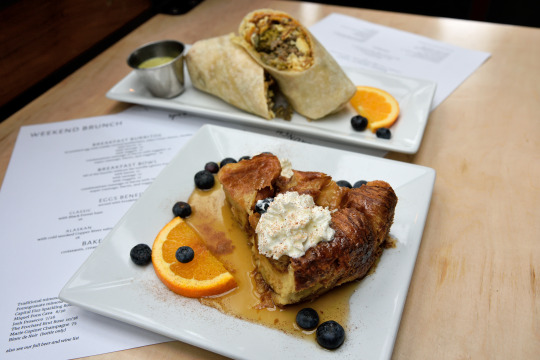
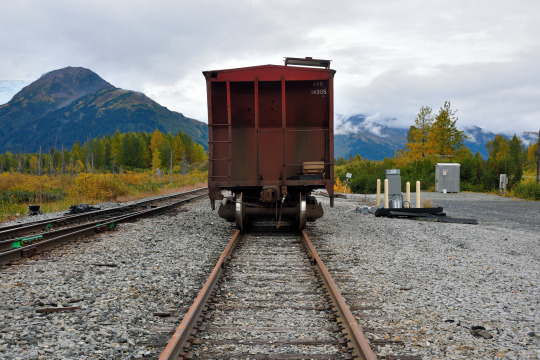


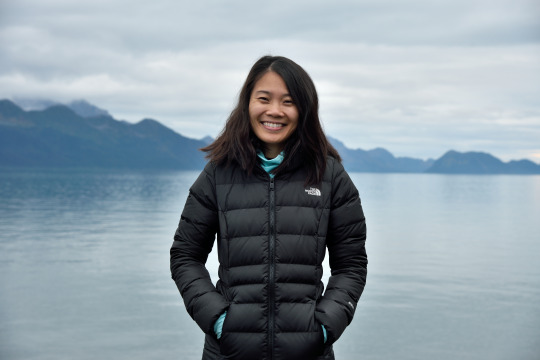
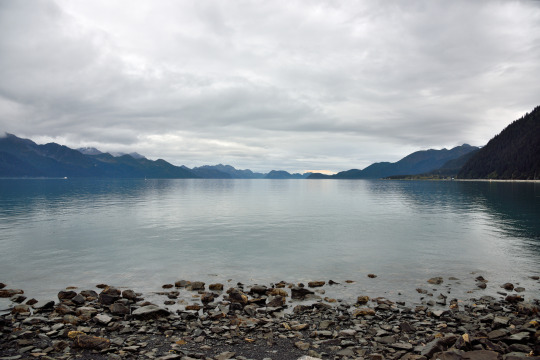

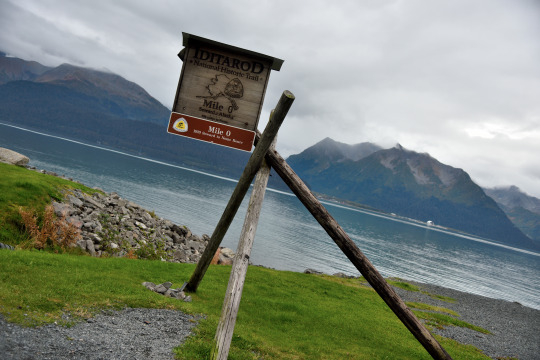
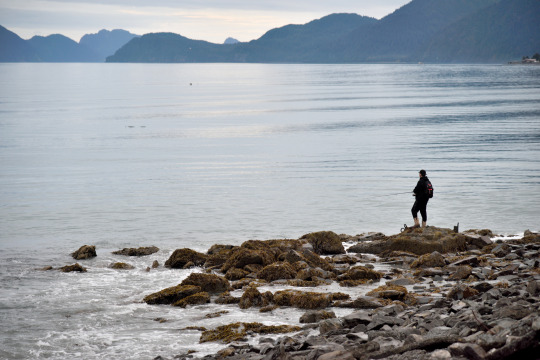
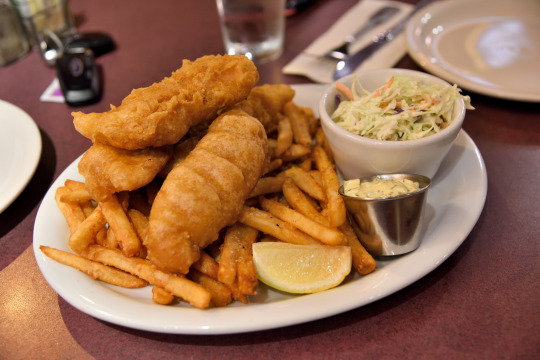
September 20th, 2020
Day 7: Taking It Easy From Girdwood to Seward
This morning, we woke up and made the most out of our late check-out by lazing in bed, watching some football (and the always disappointing Atlanta Falcons), and slowly getting ready for the day. We checked out of Alyeska around noon and stopped at a nearby restaurant called Spoonline for brunch. Their brunch was pretty good. We had their breakfast burrito with sausage and veggies as well as their baked French toast with oranges and blueberry. A nice meal to propel us into our road trip down to Seward.
Before we left Girdwood, we took one last look around the area and strolled along the street on which the restaurant was located. We checked out the Crow Creek Mercantile, a really cool, old fashioned-looking general store which was really just a Safeway on the inside of an old general store. It was pretty neat that they kept the same general store feel there despite it being much more than an old corner store. After that, we walked around the area a little more before riding back toward the resort, where we did a quick stroll around the resort grounds before heading off toward Seward.
The ride to Seward was particularly leisurely, even though the trip itself was quite short. We made a couple of stops to take photos but that was about it. We eventually made it to our nice, cozy little cabin, where I spent the first hour enjoying the epic NBA WCF Game 2 between the Lakers and Nuggets that ended with a buzzer beating 3-pointer by AD! So epic! What a game!
But anyhow, back to the cabin. It really was a cute, cozy little cabin in the woods. The cabin was one of four cabins built on some lady’s property for the purpose of renting out to guests. The area inside the cabin was pretty small and you had to make the most of the limited space you had inside but overall, there was enough space to have a comfortable stay. It was like a little studio apartment. The main room had an area for the bed, enough space for a little table, as well as a kitchenette area. The bathroom had all you needed too, including warm water for showers. There was a gas heater that warmed up the cabin pretty well. And there was a nice little deck outside with a table and two chairs if you wanted to enjoy some fresh air outside.
After settling into our cabin, we drove into nearby Seward to check out the town before it got too dark. We parked near Resurrection Bay and Waterfront Park and walked along the bay, taking in the views there, every now and then catching a seal or sea lion poke its head out of the water right off the shore. We spent a lot of time reading the informational signs located along the walking path, learning about the animals in the area as well as the history of the area.
As the evening approached, we made our way back to the car to figure out what we would do for dinner. At first, we decided to try Exit Glacier Salmon Bake, a restaurant located just outside of town. However, once we arrived there, we realized that their Google Maps page wasn’t updated and that they were closed for the season. We were bummed because their baked salmon looked so good! Instead, we looked through our options again and decided to check out The Highliner Restaurant before they closed for the night. Once we got there, we had to deal with a series of long waits before we were finally able to order and then eat our fish (halibut) and chips with sweet potato (and regular) fries and coleslaw as well as our buttermilk fried chicken with whipped potatoes. The food was good and plentiful but just a TAD on the heavy and oily side. When we were done eating, we had so much leftover fried food that we reluctantly packed it to have as a meal tomorrow. Whew, good but heavy.
On the way back to the cabin, we stopped by Safeway to buy groceries in preparation for tomorrow’s big hike. Once we were done, we just went back to the cabin to chill the rest of the evening knowing that Cynthia had an interview early in the morning tomorrow and we had to refuel ourselves before going on an 8-10 mile, daylong hike tomorrow. Excited for it though!
5 Things I Learned/Observed Today:
1. There are lots of murals that have been painted throughout the little town of Seward. If you walk around, you’ll see many different types of murals painted on the outside of buildings. A really good way to walk around and see town.
2. What does “Cheechako” mean? Well, we looked it up and apparently, it is used to describe a newcomer to Alaska or the Yukon but originally, it was meant for a gold rush newcomer who had just arrived in the mining areas of Alaska or the Yukon.
3. Whew, seafood sure is expensive to a commoner like me traveling in Alaska. Maybe it’s just me not ordering seafood that often but prices seem to mostly be $30+ for a good seafood entree. Also, of note, halibut is not cheap either. It’s usually the most expensive type of white fish for fish and chips (at least on the menus I’ve seen).
4. Resurrection Bay is full of wildlife! Some of the animals there include the black-legged kittiwakes, the harlequin ducks, humpback whales, killer whales, sea otters, harbor seals, and Steller sea lions. Wish we had time to see them all!
5. Because Resurrection Bay had a natural ice-free harbor where people could ride a ship into and land, it was an excellent area for folks back in the day to start their explorations of the area. As a result, in 1895, a network of trails (pack and sled trails, wagon roads, and railroad beds) were developed and paved starting at this location that became famously known as the Iditarod Trail. This landing spot later became officially known as Seward in 1903.
#huyphan8990#withabackpackandcamera#travelblog#travel#blog#Girdwood#Seward#Alaska#UnitedStates#Fall#Autumn#September#2020#COVID#roadtrip#ResurrectionBay#fallcolors#aspens#railroad#landscapephotography#travelphotography#fishandchips#halibut#Iditarod Trail#cabinlife#worldtravels
0 notes
Note
Hello! Was wondering if you have heard of a show called "ice cowboys" (2022)? I started watching it the other day! It was very interesting! I also wanted to ask if you had any documentaries/movies/series you recommend about mushing :0? Doesnt have to be about how to become a musher! Just in general? Thank you for answering!
I haven't heard of Ice Cowboys but oh boy does it look right up my alley (although the stuff about Lance's wife is very difficult to watch...) I'm not certain of any specific series surrounding mushing, but Life Below Zero (both the original and spin off) features several different types of mushers from homesteading expedition dogs, to Iditarod race dogs, to a malamute team. I like seeing variety in my mushing media where it doesn't just focus on the competitive racing aspect. I love sled dog racing and race dogs etc., but my love for indigenous dogs being used as they were intended knows no bounds and is a subject not focused on as much.
A great documentary is Okpik's Dream which follows Harry Okpik as he works to overcome the trauma of the Inuit Dog Culls and race his own rebuilt dog team in the Ivakkak dog race.
From a non documentary side I of course love sled dog movies and books, but I've talked about those quite a bit already recently.
#dogblr#faq#sled dogs#dog sledding#i love the iditarod mushers i just think they get a lot more attention than everybody else in the sport#which is fine they do an incredible feat#but it's only one aspect of the sport
25 notes
·
View notes
Text
Ambassador Rebecca Rusch Reimagines RPI for 2020
All spring and summer, event cancellation notices have been piling up. So when BikeFlights.com Brand Ambassador Rebecca Rusch told us that her event, Rebecca’s Private Idaho (RPI), was going to be “reimagined” instead of “cancelled” for 2020, we were curious to learn more. We caught up with the seven-time world champion, best selling author and Emmy winner to find out how she’s been adapting her life, her riding and her event during the coronavirus pandemic.

Photo by Stellar Media
BikeFlights.com: As a bike shipping company, we’ve experienced firsthand the impact of cancelled travel and events, and we realize it’s been a tough year for event promoters. What went into your decision about how to handle the 2020 edition of RPI?
Rebecca Rusch: Many events were getting cancelled, but I didn’t want to give up on this year altogether. As an athlete, I know how important it is to have the motivation to train, and as an event director, I was thinking, “How could I still meet people’s needs without putting anyone at risk?” Bringing thousands of people here to Sun Valley, Idaho was a concern. It forced me to think about what RPI is really about: connecting people, giving someone something to train for and doing good. I still wanted to meet RPI’s goals. 2020 is pushing all of us to be creative while still meeting our needs.
BF: So as you reimagined RPI, what did you decide to do?
RR: I’m excited - I’ve created a hybrid event. RPI is no longer just a challenge ride; I’ve added an eight-week training program in the lead-up to RPI that gives those who sign up access to all the knowledge I have as a pro. We’ll all train together as teammates. The idea is that I’m giving everyone access to the resources I use for my own training.
BF: How is signing up for RPI in 2020 different than just hiring a coach?
RR: What sets this year’s RPI apart is getting all the coolest information from a lot of different places. I’ve put it all together based on four decades of having been a pro athlete. Think of it as getting curated information from myself and my network of fellow pros. I’ve made all the mistakes already myself and want to share. It’s not just me telling riders to go do this training on this day. I’m using what I’ve learned to fast track people. I’ll talk about things like what to do when you’re not motivated. I’ll share lots of my own expert advice, and so will my experts.

Photo by Stellar Media
BF: Will you please give us some examples of what people can expect?
RR: Our first talk will be by Amber Neben and Kate Courtney; both are world and Olympic champions. They’ll discuss figuring out why you ride. There’s also a Facebook group for RPI members. We’ll have live content two days per week during which members can ask questions. I’ll form each week’s content based on the questions I get, so people will hear what they want to hear on topics like nutrition planning, rest and recovery and gear.
BF: Sounds like a very different approach. What has the experience of changing RPI been like for you so far?
RR: It’s like being in the middle of the race when you’re lost and have to figure out how to keep going forward, and somehow you do. I was in a good place when 2020 started, and I didn’t plan to redefine my business. But I want to keep doing what I do, so now I’ll do it in a new way.
I’ve had to create an entirely new business model to make this happen. It’s a reinvention of what an event can look like and what it’s all about. I’ve always had a lot of changes in my career, and now I’m in the middle of another one. It’s been a ton of hard work, but I’m excited.
BF: What does RPI look like in future years?
RR: Long term, once mass gatherings can happen again, we can run the event both ways. It gives us access to more people because anyone anywhere can participate. You don’t have to be able to travel to Idaho.
BF: RPI has always raised money for the Be Good Foundation. Any special fundraising plans for this edition?
RR: It’s all about people, purpose and place. This year, we are focusing RPI - through the Be Good Foundation - on groups that foster diversity, equity and inclusion.
BF: You’ve raised quite a bit of money already this year for the Be Good Foundation through your new event, the Giddy Up Challenge. Tell us about that.
RR: I got the idea for the Giddy Up Challenge from my coach. He said I needed a big, hairy challenge - something that I hadn’t done before that would be hard and that would get me off the couch and on a bike. I did need a challenge, and I also wanted to do something about COVID instead of sitting around and feeling sorry for myself and my world.
I was surprised at what a success it was. We had 850 people from 11 countries. We raised $130,000 and connected with a lot of people, and that’s where the idea for RPI reimagined came from. People are already asking me if I will do the Giddy Up Challenge again next year, and I plan to do so. Memorial Day weekend is special to me because my dad died in Vietnam during the war. It felt good to do something proactive on that day. The Giddy Up Challenge was a way to expand our cycling community to a wider network. RPI will be a little like the Giddy Up Challenge but on steroids.

Photo by Stellar Media
BF: Have you participated in virtual events put on by other organizers this year, and if so, what have you liked (or not) about them?
RR: This spring, I got into some virtual Zwift riding when I got home for the Iditarod. I got a new smart trainer that made it more fun, and my coach told me I had to get off my couch and meet him on the bike. Two days a week, I’d virtually meet him and friends - I was motivated for a meet-up. I really needed that during the initial spike of COVID. The smart trainer was great and downloaded my workout and kept track of everything. I also like the chat room. At the same time, I always prefer the outdoors so I will ride outside whenI can during the summers.
BF: We noticed that you have not used the word “virtual” to describe the reimagined version of RPI. Why?
RR: I’m not calling it virtual because it’s real. People are really going to be riding their bikes. RPI is more than just a screen or an avatar. It’s the engagement that makes it valuable - it gives us a connection.
BF: When you’re not planning events, what else have you been getting up to during this pandemic?
RR: I’ve had the opportunity to do some bikepacking goals -- things I’ve always wanted to do, but I was always traveling during summer in Idaho. I’m exploring my own backyard. I live here for a reason, and this reminds me what is important in my life. I think a lot of people are now discovering all the riding near their homes, including “new” trails they’ve never been on.
BF: Any new or different non-bike pandemic activities for you?
RR: I’m gardening more, and I’m spending more time with my husband and my dogs which are my family. I talk to my mom more on the phone.
My husband, Greg, also got me my first bow. I’ve been learning how to shoot that. It requires a lot of concentration and target practice.
BF: You’ve been around and in the sport for a long time. What kind of long term impact do you think the pandemic will have on events and riders?
RR: I think we’ll see more of the trend we’ve been seeing already: the explosion of gravel and bikepacking. The pandemic is emphasizing that people want to go explore and adventure, and the bike is a beautiful tool to do that. People have been moving away from less traditional races to more exploratory rides and events such as gravel events that are participatory and in places they haven’t been. People are getting out in the dirt and going places, and you can do that from almost anywhere you are - even if you can’t travel.
Post-COVID, I predict that people will be more choosy about what events they do and whether they travel. People might not go to an event every single weekend of the summer. I think that people will be more selective and conscious about what they choose to do. That means less participation, and some events won’t survive. People might still go to one or two per year but not five or six.
BF: Any parting thoughts?
RR: I’m lucky that where I live I can be outside. Home is a beautiful place. I think when I can travel again, I’ll choose more carefully. I think I won’t spread myself as thin and won’t go everywhere and do everything.
The pandemic has been helping me crystalize my priorities. A lot of times we go do what we’re doing without thinking about it. We don’t have to do what we did just because we always do.
Editor’s Note: Riders can sign up for RPI any time between now and Labor Day weekend and get access to all content and expert advice in the lead-up to the event. Training programs are available for the 20-mile Tater Tot, 56-mile French Fry, 100-mile Baked Potato and four-day Queen Stage Race.
Check out the video about this year’s RPI:
youtube
Check out our video recap of the 2019 edition of RPI:
youtube
Sign up for the 2020 edition of RPI.
#bikeflights#bikeflights.com#rebeccasprivateidaho#packshipride#shipitandripit#shipyourwhip#rebeccarusch#RPIchallenge#begood
0 notes
Text
Episode 2.0: "I ate a Bagel and we SNAPPED" - Eve
After the “Ginger Curse” met its next Travellers Survivor victim.......
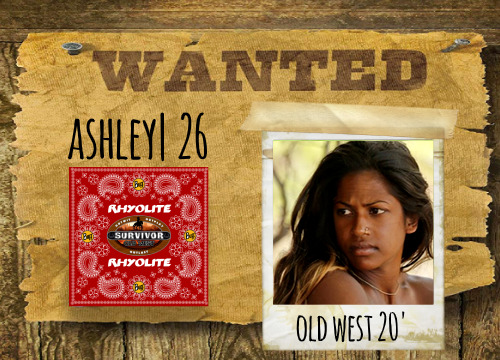
Whew okay so I don't know anyone on my tribe (kinda) which is good but also a bit scary since its just 6 of us. Overall, I feel like everyone's a bit quiet and not too talkative. That being said, they might be talking a bunch in PMs. Right now, I am trying to stay under the radar and just be friendly with everyone. I really like Austin, Eve and Patrick right now. Keaton and Isaac are nice too but I dont really talk to them as much. If we would have lost this first immunity challenge I would have definitely wanted to vote for one of them. No official alliances yet but its still early so I think its okay. THANK FUCKING GOD WE WON. Okay well, we got 2nd but thats a win in my eyes. I just really hope I make it to jury and I will be happy so not being first boot is GREAT. Im trying to get this damn idol but I cant catch a fucking break and my ass keeps getting zapped... I dont think anyone has gotten the idol yet so I hope i get lucky and somehow get to it first. Here is how I see everyone as of right now: Austin: Probably my fave right now and hoping I can get into a f2 with him. He's funny and sweet and I feel like we get along and its pretty easy to talk to him. Eve: Eve is iconic! Want to work with her but I feel like she is really social so she might be a threat later on. Pat: Same as Eve, even though I just met him, I actually have known about him before since he is friends with some of my friends. I know he does good in games so he is someone I would like to see leave a bit sooner since I think he will be hard to get rid of later. But hes amazing and his video for the music video was ICONIC. I can see him and I becoming friends for sure. Keaton: Not much to say, I do know keaton from playing a game with him in the past but he was voted out first I think and then I hosted him in HOS but i wasnt super active in that one :) Anyway, I feel like we dont have much to talk about so I need to make more of an effort with him. I really wouldnt care to see him go tbh but who knows, this can definitely change if we start talking more. Isaac: omg okay so night one I go into everyones PMs to say hi and i notice that I already had messages with him which I found super weird because I didnt know who he was but I guess we kind of got into it like 3 years ago??? I told him I didnt remember this but i do. He was basically an asshole to me for no fucking reason. But this was 3 years ago so i really dont care so I hope he doesnt try to target me over it. He seems nice I guess but I havnt really talked to him much. In his defense he has been sick apparently but if we would have gone into this first TC I would have wanted to see him voted out first for sure.
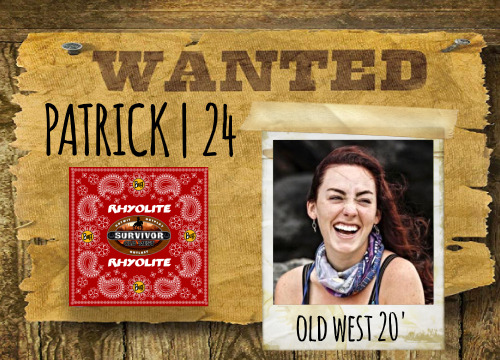
youtube

We won thanks to the combine efforts of Nick, Chloe, and Aidan. All kings and queens! I probably should say something about the vote switch last time. Yeah that happened. Didn’t even realize cas was part of the tribe. Great social game 10/10. So sorry Payton <33. Now we wait to see who goes but so far I quite like nick, Chloe and Aidan. Idk if I can take Chloe that far tho. I feel like she’s gonna get targeted by the other tribes when we merge if we survive that long anyways. I feel like out of our tribe, Nick has the best change of making it to f4 but I’m not sure he’ll be able to win. Payton has a job that takes him away so :/ if we lose again, he’s probably gonna be voted out next. I mean if I’m taken out of the picture. I’m pretty sure the tribe thinks I’m hella annoying but they need me on their side for now. :^)
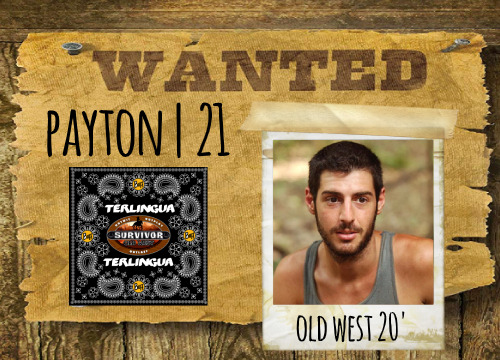
Lmaoooooo well thank fuck we won because my ass was on the chopping block lmaoooo. My ass didn’t volunteer to do the challenge either because I fucking suck at memory so mfjrkjskfks lmaoooo fuck me man. I’m barely scrapping by but here I am

So happy we are safe again! I'm so use to going to tribal everytime lol. I think now would be a good time to get ashley eve and isaac all together on the same page with me for some kind of alliance
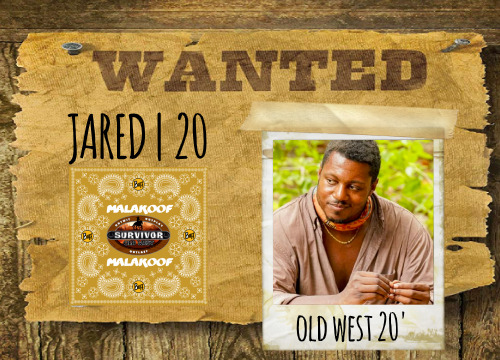
What's up though? Here we are in Survivor: Old West, losing the second immunity challenge and we have a specific reason to point to in Xander. I'm sure he tried his best, but when it came my turn to answer the questions I was only able to give correct answers about the information he gave me. I personally think he is the person that is going to help us the least, but Sammy was not in that challenge. In the challenge that Sammy mainly participated in, Nicole was the person that made things difficult for us. That brings us to late last night where Sammy decides to be the first person to throw out a name and pick Nicole, gives his reasons, and that's it for me once the name is said and agreed upon in my alliance, it's done that's the plan. Now all there is to do is see what Xander and Dylan say, and we're done. I hope so anyway, I could sit here and ponder if Sammy had ulterior motives or if this is a good move for me but at this moment I don't want to overthink anything, so we chillin' --- Oh as I was writing this I found a Vote Reveal advantage on space 25 on the railroad, which I am guessing means there are more things on 50 and 75. Vote Reveal is a bit useless but maybe there will be a specific situation where it will work out.

So so happy our tribe won that challenge. Honestly idk how to feel about this game. Im trying really hard to be social with people so IF we lose im okay but I feel like everyone except Austin is actively reaching out to me. I basically start all the conversations. So to me either people are a bit inactive in this game/ dont care about the game or theyre already forming alliances and dont really need to talk to me. Im really hoping its that theyre inactive. Right now Isaac and Keaton can go, they literally just leave me on read and dont try to talk to me. I had a good conversation with austin WHO I FUCKING LOVE IM SO GLAD HES HERE and he wants to start an alliance soon. We both agree Eve would be a good option but he also mentioned that he would like isaac or pat to join it. This lets me know he likes isaac so they must be talking so idk why he isnt talking to me but whatever. Anyways.. I would love an alliance with Austin, Eve and Pat but a four person alliance when theres only 6 of us can be scary. Luckily our tribe has been doing well in challenges so far but we will probably have to go to TC at some point and thats when shit is going to go down. I can def see people possibly wanting to vote me so im going to start being even more social and get that alliance going with Austin. I wouldnt mind seeing Isaac or keaton going if we do go to TC next round. I doubt anyone has the idol yet and holy shit im so bad at this i always get zapped. I need Jess, Micheal or Alyssa to rig this shit for me please
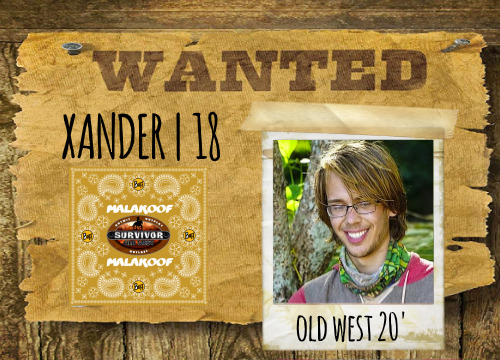
The challenge involved having people active on call.... And to be honest I didn't want to do it for us. But I offered because I don't want to be that guy. Anyways. We lost but barely. Got our hopes up saying 8/10 if only Michael could count. Makes me wonder what's really going on up there in his head. I'm just glad the votes seem to be off me this time. But we can only hope. I did my part of the competition. So they can't entirely fault me.
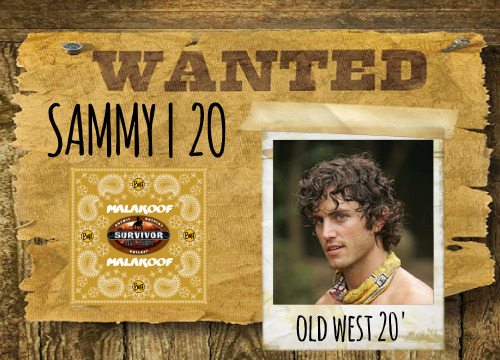
Okay so I’m in an alliance w Jared and Owen and I think I mentioned that. I honestly wanted to sit out of the challenge bc I just needed a break. However, we lost and in my head I immediately thought to vote Nicole. She really hasn’t put in too much for these challenges and I know she’s on vacation. Xander would be my next choice just because he is short on responses and I feel like he would vote me out over Jared or Owen and a i assume he’s closer to them after the challenge. I’d like to work with Dylan on the side if possible. I’m just chillin hoping this first tribal isn’t a blindside and if it’s against me then hoes ain’t loyal and that ain’t very western like. I don’t think they would betray me this early tho and I have faith in my alliance.

I feel like these people are carrying me at this point and that is A okay with me. I’m running the Iditarod and they’re my dogs
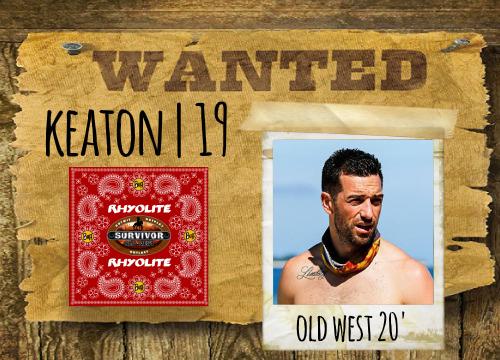
OKAY WOW PAT EVE AND I POPPED THE FUCK OFFFFFF we did everything we needed in life and it was beautiful. I'm not really doing alot in this game I'm just floating along woooo
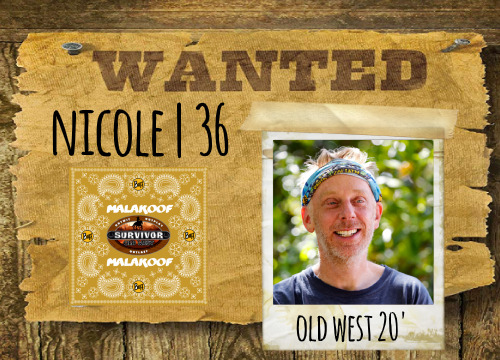
Welp it's been real y'all. No one had talked to me since the challenge much and only sammy has said maybe it's me and Dylan says it's definitely me.
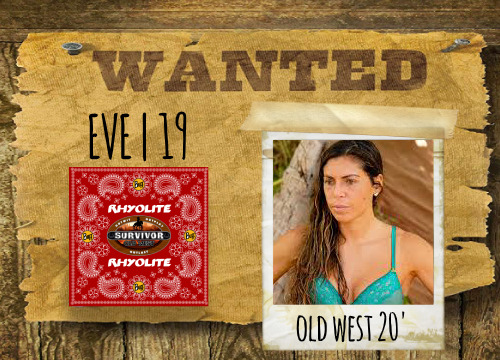
Hi welcome to my lifeeeeeee today i ate a bagel and we SNAPPED in the immunity, I FUCKING KILLED IT, (thanks keaton!!!!!) HEHE HAHA IM SO CUTE Waitin for this Alliance to be made tbh but what do i know, we're gonna keep SNAPPING so whatever ladies xoxoxoxoxox

youtube
0 notes
Note
💗
💗- A memory about a good deed they did
Bobby’s not been back long, and he’s still getting used to the relatively quiet, rural area outside Sioux Falls where he grew up. After wandering around half the countries on the planet, home seems almost strange.
But he’s getting more comfortable with the place again. Taking walks in the morning feels like a good way to accustom himself to the sights, and cross paths with the neighbours. Most of those he meets have dogs to walk, which makes conversation easy; he’s fond of dogs, himself, and never minds lavishing attention on them.
The relative quiet is very pleasant when he takes his walk one autumn morning; it’s starting to get a bit nippy, but it’s still a gorgeous day. Further up the road he can see a young lady trying to wrangle her dad’s husky-lab mix, which seems to have had a large hit of the canine equivalent of caffeine from the way it’s bouncing around.
The inevitable happens; the leash snaps and the dog’s straight off down the road like it’s trying to win the Iditarod. Bobby hears the woman’s shriek at the same moment he comprehends the situation, and dives into action. He’s lunging for the broken leash as the husky barrels past, and manages to wrap it around one hand. It’s only due to sheer luck and a handy telephone pole that he’s not immediately dragged over on his face, but he does manage to halt the charge until the young woman reaches him.
“Oh god, I’m so sorry - he’s not usually like this, I swear,” she says, clearly embarrassed, as she tries to find a way to fix the leash. Bobby can’t help laughing at the whole situation. She’s so earnest about it, and it is kind of ridiculous.
“It ain’t a problem, honest,” he says as she finally gets the dog under control and he carefully relinquishes his grip. “I’m just glad I was able to catch him before he got much further.”
“You an’ me both,” she replies, giving him a warm smile that makes her look completely beautiful.��“My pop would’ve been heartbroken - Salter here’s his baby, Pop wouldn’t be able to cope without him around.”
“Best get him home safe then an’ get a tougher leash,” Bobby says.
“Will do. Thank you, uh…”
“Oh - Bobby.” He holds his hand out, half-remembered manners kicking in at last. She takes it, still smiling.
“I’m Karen. Nice to meet you.”
“You too, uh, Karen.”
She lets go and heads back up the road, keping a careful grip on the dog’s collar. “See you around, Bobby. An’ thanks again.”
“Any time.” As he heads home, he can’t stop grinning.
2 notes
·
View notes
Text
Ititapod Bonus Episode: Rainy Pass Interviews with Jessie Royer, Matt Hall, Linwood Fiedler
Casey Groves: Welcome to a bonus edition of the Iditapod!
[horn noises play]
C: I’ve always wanted to do that. Yes, this is a bonus episode. We are going to be trying a little experiment here today. We had three pretty good interviews I felt like with Zachariah Hughes, up in Rainy Pass, and I thought, let’s just put those on the internet and see what happens. Just trying a little experiment here, so let us know what you think. Write us at [email protected], I’m on twitter at twitter.com/kcgroves, and, you know, if you like the idea let us know; if you think it’s dumb, just keep that to yourself. Just kidding. You can let us know if you think it’s dumb too.
The first one is Fairbanks musher Jessie Royer, the second is Matt Hall, and the third is Linwood Fiedler. These are from Rainy Pass, these are full interviews, back to back to back. Again: Jessie Royer, Matt Hall, and Linwood Fiedler. In that order. Anyways, here’s Zachariah and Jessie Royer.
Zachariah: I’m just curious how it’s been so far taking care of 14 instead of 16.
Jessie Royer: Oh, well, it’s always going to be easier, you got two less, but uh, do I prefer 14 over 16? No… I still like 16. But yeah, it’s always going to be a little easier cause you got two less dogs.
ZH: Have you felt it on the hills coming up here yet?
JR: Not so far, because it’s been such a fast trail. You know, I mean I guess if it was a really slow, deep trail you’d probably feel it, but it’s been so fast, that not yet.
ZH: And just, has it been this kind of packed down and slick the whole time? Or was it sugary out near Skwentna?
JR: Uh, I would have to say, it was really soft and rough and deep getting to Yetna. Really slow, the first 40 [miles], but then the river got a little better towards Skwentna, and Skwentna to Finger [Lake] it’s really been pretty good.
ZH: And are you, I mean, does it give you pause to rest your dogs before going through the gorge and all the technical part, or, I mean, how do you manage a fully rested team going through all those, all that driving?
JR: Oh, well, my team is pretty, I have to say my team is pretty controlled anyway, but it’s gonna be a couple hours run from here till we hit the pass, and like three hours before we hit the gorge, so it’s not like it’s gonna be right out of the chute, and then I don’t stop until we get out of it all. I do it all in one run. Cause otherwise if you don’t, if, you know, you stop in Rohn, you’re leaving with a fresh team right away on the Buffalo Tunnels, which is even worse.
ZH: Really?
JR: Yeah.
ZH: How come?
JR: Buffalo Tunnels is always worse than the gorge.
ZH: Even - I mean they’re saying, with the better snow than I think most people have seen in awhile.
JR: Well, then if that’s the case, then that’s great, then that’ll make it not too bad. But if it’s no snow, then it’s always worse.
ZH: Is that just cause there’s tons of [intelligible] and stuff that you’re trying to-
JR: Yeah, there’s a lot of hills and ice and, and uh all the old burns, stumps -
ZH: Buffalos, of course.
JR: Uh, I’ve only seen the buffalos once in all the years I’ve ever done it. Uh, which my dogs are used to seeing buffalo down in Montana, uh, they don’t really care about that.
ZH: Are the buffalo used to seeing sled dogs?
JR: They see them and they just take off running. I’ve never had an issue with them being aggressive or anything. I guess some mushers have, but I never have. Um, every time I’ve seen them they just take off running, but, uh, yeah I think it’s more or less just the hills and the ice and the stumps. And you can’t control the team on bare dirt and ice. So I think that’s the biggest part.
ZH: It seems like you got a pretty little sled, are you just going checkpoint to checkpoint for this first part?
JR: Little sled? Everyone thought it looked pretty bloated [laughs] but uh, no, it’s, I got everything in there I need. Yeah, and I had, I camped out with it, I can fit everything I need for a campout in it.
ZH: You’re a much more efficient packer than I am, I guess
JR: Maybe
ZH: My last question is what you’re listening to on your earbuds.
JR: Oh, probably everything. Yeah, probably most country or christian, but there’s a little bit of everything on there. I have friends that just piled all kinds of stuff on there. There’s stuff I don’t even know what it is.
ZH: And are you gonna take a nap, or are you just gonna do chores and bide your time?
JR: Oh, I’ll hopefully get a nap at some point here.
ZH: Oh, good luck Jessie, thanks a lot
[end of interview]
Next up was Zachariah’s interview with Matt Hall.
Zachariah: I saw you yesterday at Skwentna, and then you said you were gonna camp a half mile down the trail, how did that work out?
Matt Hall: Yep, uh, great. Worked out really good actually. It was nice and quiet, and the dogs and I got some really good sleep. Um, the plan was to do the exact same thing here actually, just go a mile down the trail, but I needed a vet to look at a couple of these guys, so I figured we’d just hang out here. Little noisy, but, they rest good.
ZH: Yeah. So, your plan was just kind of go right through and then make it up and over the pass? Or camp out along the trail again.
MH: Oh, just camp, not even a mile out of here, cause it was already a long run into here, so just like the last place, just grabbing stuff and not going more than a couple miles, cause at that point you’re carrying a lot of weight, yeah, the only reason for it is just to be quiet and calm.
ZH: And what was the, what were the dog problems that the vet took a look at? Anything serious or pretty minor?
MH: Yeah, pretty minor, just uh just a toenail and a wrist that both needed some antibiotics that I didn’t have, that I didn’t have with me, so, um, needed to stop for those. So yeah, super minor, and dogs will be good to go after a rest here.
ZH: Do you feel like your kind of [Yukon] Quest experience and a lot of that training makes it a little easier for you to just blow through the checkpoints and just do your rest schedules out and about?
MH: I mean, for sure, it helps me, we’re used to camping on the trail, we got it down pretty good, you know the dogs are in the rhythm of it coming off of [Yukon] Quest too, you know, run rest eat, run rest eat, um, they’ve got it down pretty good. So yeah, it doesn’t matter, it doesn’t matter too much where we camp out, but, yeah, the trail is nice, and -
ZH: How has the trail been, coming up here? Was it kind of this, packed and firm?
MH: The last run into here was amazing, it was great. Yeah, really hard trail, fast, easy going, the first day out of the start was pretty soft, so that was a slog. But yeah, coming up into here was pretty great, there’s definitely an advantage to being towards the front early on, just because of that. You know, you get 20,000 dog feet over it, and 50 sleds, and, you know, it starts getting softer and softer. Then as the heat of the day comes on, too, so yeah it’s absolutely the perfect time getting in here, we’ll be kind of leaving at the end of the heat of the day, but then it sets us up great for a night run, a rest at night, and another run into the morning hours like we did today, so it’s kind of a perfect schedule at the moment.
ZH: You did it last year, through the gorge and all that, but do you, does it give you any pause going through the more technical sections with a fully rested team?
MH: Um, yes, and no, you want the dogs, you know, geared down just a little bit? So that’s why a lot of us do some longer runs here in the beginning, normally in [Yukon] Quest and whatnot, I don’t start out doing a couple of 70s, back to back, but it’s kind of ideal for here, going down the steps as we just did and hitting the gorge, next out of here, to have those couple longer runs and get the dogs geared down. I have a little better advantage over that, having dogs that just came off the [Yukon] Quest, so they find the rhythm a little quicker, and then the downside is that I don’t have the speed the other teams do, so when everyone else takes a 6 hour rest, I take a 5 hour rest, so I’m not the fastest team on the trail. But they get into their rhythm and then off they go.
ZH: What’s your goal for your team this Iditarod? I mean, it’s harder to do much better than 5th in the [Yukon] Quest and then turn around and do another race and finish, but what are you aiming for?
MH: Right. Um, you know, it’s hard to say. You know, I want to do good, of course, I want to do great, but man, you know, the competition is super steep, there’s some incredible teams out here -
ZH: Speaking of.
MH: Yeah, um, so yeah, I try not to go into races with goals, because if you don’t have goals then every finish is a success, and an accomplishment, so I try not to have goals and we just go and see what we end up with.
ZH: I’m gonna ask you that at the end [Matt laughs] and see how this very humble answer compares. Thanks a lot Matt, I’ll see ya, take it easy
Finally, Zachariah’s interview with Linwood Fiedler
Zachariah: Are you gonna rest for awhile?
Linwood Fiedler: Yeah, I’m gonna be here for at least 4 hours, and wait for it to get cool, 4:30 or so, somewhere around there I’ll take off.
ZH: Did you stay in Skwentna last night? LF: I did. Well, I got there this early morning, I got there at 4 in the morning.
ZH: And uh, are you stopping mostly to avoid the heat or are you trying to give them a rest before going through the pass? LF: I’m trying to avoid the heat, it’s just gonna get warmer and warmer and warmer, when it’s like this, 5 degrees, going up makes a huge difference, I mean you can just see the team just wilt [laughs], I mean they’re like a car with no antifreeze in the radiator.
ZH: And how was the trail coming in this morning?
LF: I don’t think I’ve ever seen it better. I mean, it’s certainly one of the best trails ever, so, yeah, um, yeah, I mean it’s the Iditarod trail, but it’s in pretty good shape.
ZH: Not too tore up from snow machines or anything like that? LF: No, it’s like this, it’s a firm base, you know, so, which is great for them, you know, especially with these temperatures.
ZH: For somebody like you, who has done this so many times, do you feel the difference between 14 and 16 dogs? LF: I wouldn’t mind 16. I know there’s two different camps on that issue, but I really like running with 16 dogs and stuff, so. You know, it’s, I’m not quite understanding why they went down to 14 myself, so, it doesn’t make a whole lot of sense to me.
ZH: Uh, [laughs] how do you feel, I mean, going through with a supercharged team through the, I mean, it sounds like they put in a bunch of ice bridges and it’s going to be as tricky and technical going through the pass as ever.
LF: It always is. It always is. You just gotta be ready to be game on and not be sleepy [laughs]. So.
ZH: How are you gonna do that?
LF: How am I gonna do that? I’m gonna try and take an hour nap here. [laughs]
ZH: Out here, like in the sled bag?
LF: You know, I may lay down with them, or I guess there’s a little cabin we can get in if we want.
ZH: But you don’t have like an exoskeleton for the gorge?
LF: [laughs] No. My head hits a tree, is what’s gonna happen.
ZH: Well I hope you make it out in one piece, thanks a lot man, take care
[end of interviews}
Casey Groves: That was Jessie Royer, Matt Hall, and Linwood Fiedler at the Rainy Pass checkpoint, talking with Alaska Public Media’s Zachariah Hughes. Stay tuned for a full episode of the Iditapod.
[theme music plays]
2 notes
·
View notes
Text
Answering Thought Catalog's 50 Questions To Ask A Girl If You Want To Know Who She Really Is
1. What’s one thing that’s happened to you that has made you a stronger person? Idk if it MADE me strong but helping a stranger through a mental health crisis helped me recognize some strength. 2. What’s one thing that’s happened to you in your life that made you feel weak? Participating in high school sports. 3. Where is one place you feel most like yourself? In a garden 4. Where is your favorite place to escape to? The beach 5. Who do you think has had the largest influence on the person you are today? Dad 6. If you could change one thing about yourself what would it be? If I changed any major character flaws I don’t think I’d feel like me. I honestly would just change one big decision I made at 18. 7. If you had one day left to live, what would you do first? I’d have to make arrangements for the furbaby to be taken care of. Then maybe I’d tell people how I feel about them. 8. What decade do you feel you most belong in? 50’s music, 50’s cars, rockabilly style 9. Who are you closest to in your family? Why? Uncle Brian understands the importance of artistic expression. 10. Who is the one person in this world that knows you best? Sarah F 11. What is your favorite quality about your best friend? She calls it dramatic, but I say passionate. Loudly standing up for your beliefs isn’t the same as stirring the pot for the fun of it. 12. When you were younger what did you think you were going to be when you grew up? Musician’s manager 13. If you could identify with one fictional character (from a book, show, or movie) who would it be? Misty Day from AHS 14. Do you easily accept compliments? Or do you hate compliments? Compliments always seem insincere to me, like flattery with a hidden motive. 15. Is your favorite attribute about yourself physical or non-physical? Non-physical 16. What is your favorite physical attribute about yourself? My eyes? 17. What is your favorite non-physical attribute about yourself? Sense of creativity. 18. Do you believe in love at first sight? No, that’s infatuation 19. Do you believe in soul mates? There’s someone in the world who’d be the best match but you might not ever meet. Soul mates seems to imply that’s who you end up with because it’s “meant to be” but most of us are going to settle for good enough. 20. How seriously do you take horoscopes? I don’t believe they predict the future but I do identify with the traits of being an Aquarius. 21. Have you ever been in love? How many times? Yes. 3, a possible 4th currently 22. What makes you fall in love with someone? When they think outside the box 23. What does vulnerability mean to you? What has the ability to make you vulnerable? Paranoia says I’m vulnerable every time I leave the house… 24. What’s one thing you’re scared to ask a man, but really want to? I’m not scared to ask, what scares me is all the stupid answers I get… 25. If you were a man for a day, what would be the first thing you do? It might be the same as any other day, except I’d be a little more comfortable with my slubby-ness. 26. What do you find most attractive about each sex? TBH I find women more physically attractive than men. Guys, the most attractive thing you can do is not act like you’re owed something. Actually be a good friend instead of telling us what a nice guy you are. 27. What’s one thing you’d love to learn more about? Beekeeping. 28. What is something you’ve never done that you’ve always wanted to do? Pierce my lip 29. Why haven’t you done it yet? Family pressure 30. If money didn’t matter, what would your dream job be? Wool farmer. 31. If you had off from work today, what would you do? I usually look forward to doing nothing. 32. What was the last thing that made you cry? A scene from some movie where parents make the ultimate sacrifice for their son. 33. What was the last thing that made you laugh? Bun 34. What is your favorite memory? Visiting an Iditarod musher’s kennel. 35. What’s the last thing that REALLY embarrassed you? Ripping my pants. 36. What is your biggest fear? Not being able to enjoy things I love. 37. Do you have any regrets? What’s your biggest one? Ex #2 38. Have you ever broken a law? If you haven’t what is one law you’d love to break? Smoke weed everyday 39. What is the craziest thing you’ve ever done? Drugs 40. Would you have a conversation with a stranger? Rarely 41. Would you tell a stranger they have toilet paper hanging from their shoe? Or their dress tucked into their underwear? (Or anything else that is embarrassing to be seen in public)? Honestly no, in my experience they’ll be embarrassed no matter how polite or discreet you are and often they’ll see you as rude for pointing it out. 42. What’s your favorite joke? Copernicus said, “What if the earth revolved around the sun?” To which the Catholic Church replied “What if we set you on fire?” 43. Are you a dog person or a cat person? I would say dog but my feral kitty friend has started to grow on me. 44. If you could be any animal, what animal would you be? Birb 45. What’s one show, movie, or book, you’re embarrassed to admit you enjoy? I used to watch Glee pretty religiously. 46. How do you think your parents would describe you as a child? My mom likes to remember me as a giggly infant, but for most of my childhood they’d say “shy”. Shy really meaning an unsocialized only child experiencing the first bouts of depression. 47. If you could go back to any age or time of your life, what age or time would it be? 18 48. What’s something you believe in that not everyone else does? Ghosts? 49. What’s one thing you would say that makes you unique from other people? Nerd girl who doesn’t like video games. Fight me. 50. What is one thing you feel your life is missing? Another bunny
1 note
·
View note
Text
Iditarod Teacher: How to Connect and Learn from the Iditarod Race
Heidi Sloan on episode 258 of the 10-Minute Teacher Podcast
From the Cool Cat Teacher Blog by Vicki Davis
Follow @coolcatteacher on Twitter
Heidi Sloan is the Iditarod teacher for this year. It starts on March 3 – 18. Get free lesson plans, connect with a musher and get your kids excited.
Check out Jennifer Gonzalez’ 2018 Teacher’s Guide to Technology for more than 200 tools with special tips, videos, and screenshots to get you started.
Listen Now
//html5-player.libsyn.com/embed/episode/id/6283340/height/90/theme/custom/autoplay/no/autonext/no/thumbnail/yes/preload/no/no_addthis/no/direction/backward/render-playlist/no/custom-color/2d568f/
Listen to the show on iTunes or Stitcher
Stream by clicking here.
***
Enhanced Transcript
Iditarod Teacher: How to Connect and Learn from the Iditarod Race
Link to show: www.coolcatteacher.com/e258 Date: February 21, 2018
Vicki: Today we’re talking with Heidi Sloan, a Virginia 5th grade teacher who has the privilege of reporting on the Iditarod this year, February 19-22, 2018.
So Heidi, tell us about this opportunity and what you’re going to be doing.
Heidi: The Iditarod is a dog sled race across Alaska commemorating the Iditarod trail and the sled dog tradition of Alaska. Every year I have incorporated the race into my classroom for a long time, and it just builds engagement and motivation with the kids.
They have a whole education department but they choose one teacher a year to go on the race. It’s been a dream of mine for years.
This has been a dream of mine for years
I applied, and I was chosen last April to be the 2018 teacher on the trail. I will be going out and speaking to schools and actually flying by bush plane to all that the mushers have to … and I’ll write that lesson plan, and what’s going on each day from Alaska.
Vicki: So how will people be able to follow these lesson plans and let their students follow along?
How can we follow along?
Heidi: If you go to Iditarod.com, and then click on the Education tab, there’s just a boatload of wonderful lesson plans for every subject. Then my tab once your on the trail. I’ve been posting week for months. I have a lot of ideas and lesson plans for teachers, too. I just put one on. If you’re new to the Iditarod, just getting started, it’s a really good checklist of ways to just jump in with all that you need, just to start. So I would recommend that, too, if you’re new to it.
Go to: http://iditarod.com/edu/category/teacher-on-the-trail/
Vicki: What do your students think about this opportunity?
How are your students feeling about you going?
Heidi: They’re very excited. They’re a little apprehensive that I’ll be gone for five weeks, because it’s actually March 22nd that I get back.
Vicki: Ohhhhh! So it’s February 19 through MARCH 22nd? Sorry, so they’re going to be following this for a while!
Heidi: The race actually begins on March 3rd. That will be the weekend to be watching, but they’re excited. They love learning about the Iditarod. It’s so new to kids, especially in the south. They just have no concept of the cold and snow and all the neat things that go into mushing dogs. They do get excited, and it really helps them want to read the articles and do the math problems and make the — that have to do with it. It just wraps rather easily into our curriculum.
Vicki: Heidi, what are some of the best things to teach, using the Iditarod as kind of a backdrop?
How does the Iditarod fit in with a regular curriculum?
Heidi: There’s a lot of character education that you can pull out of it — determination, loyalty, leadership, all that kind of stuff definitely can be pulled in. I do a lot with that.
Even in geometry, you can work with the dogs’ harnesses and measure the angles. There are a lot of fun things to do with math.
I do a STEM project where the kids have to come up with a little dog house that has a certain amount of volume in it, using crackers and frosting. There are just all kinds of neat things you can do with that.
There are a lot of articles that the mushers write at the EDU of Iditarod does. You can have your kids read the articles.
There are just so many fun things.
How can people reach you while you are there?
Vicki: So Heidi, will people be able to tweet you? Will classrooms be able to tweet you questions?
Heidi: My internet is sort of spotty, because I’ll be in the interior of Alaska…
Vicki: Ohhhh…
Heidi: Probably the best way to reach me would be [email protected] and I will be able to email back sometimes and possibly even send a little Skype video or something to teachers. So if they want to see the dogs, or see what’s going on, I’ll do my best.
When and how can teachers apply to be able to do what you are doing?
Vicki: So when do applications open to apply for 2019? That’s going to be the first question that some folks ask after they take a look at all your lesson plans.
Heidi: They have actually selected some finalists for 2019, so the next up would be 2020. So they are due December 1st.
If you click on the “Teacher on the Trail” tab, it tells about how you can apply as well and what the requirements are. It’s the thrill of a lifetime, so if anybody is interested, I would just say, “Go for it!”
Vicki: And Alaska is just such a beautiful state. I’ve been there and spoken at their conference. So many beautiful, wonderful educators there. And it’s just… just… the beauty is tremendous.
Heidi: Yes, yes it is. It’s just pristine. I’ve been getting a lesson ready for the Alaskan schools, comparing Virginia kids to Alaskan kids. Things that Virginia kids never see, like snow machines or moose.
Vicki: Well, until this winter, right? (laughs)
Heidi: (laughs) That’s right!
Vicki: This winter’s been wild.
Where would teachers begin if they have no experience teaching this?
OK, so how does a teacher get started? You said you have posted a lesson plan on getting started with teaching about the Iditarod. But tell us again where to go and how you think that we should start.
Heidi: Go to Iditarod.com and click on the “Teacher on the Trail” tab along the side. On there is “New to the Iditarod” is what I think I titled the post.
Basically, it gives some book ideas for read-alouds to get started and getting your kids familiar with the race.
It’s got some math activities. It’s got activities on researching the rules, which is good reading research practice, and that helps them understand.
I’ve got a packet in there that helps them find a musher that they can follow and cheer for, and what they can look for on the website once the race starts.
I’ve got ideas on graphing the temperature and things like that all along the race, and doing activities with the checkpoints. Those are some of the things that you can just get started, and then you can build from it as time goes on.
I always say, “Start small, and you can always add to it later.”
Vicki: So what is the most surprising thing that you’ve learned about the Iditarod?
What has surprised you the most?
Heidi: Hmmmm. I love the Alaskan people. A lot of the mushers are from Alaska or foreign countries like Norway and Sweden. I like their adventurous spirit.
I love how difficult the Iditarod is. People don’t realize. You’re going down mountain cliffs. You’re going over frozen rivers that sometimes have water on them.
Just the bitter cold and the “Do it yourself” type of attitude. I just love that, and how the mushers help each other along the trail.
All that has been a wonderful learning experience for me.
Vicki: So, the Iditarod is coming up, March 3 through March 22.
We will have all the resources for you. We can follow Heidi.
Heidi, thank you for coming on, so that we can have a voice and of course your picture that we
can include this exciting opportunity for teachers to be able to take some fun lesson plans and kind of get to know exactly what’s going on. This is just a great teaching opportunity.
And I love how this event has actually having a teacher to really engage teachers and students. I think it’s a fantastic model I hope a lot of events will follow this model.
Heidi: Thank you so much, Vicki, for the opportunity to share.
Contact us about the show: http://www.coolcatteacher.com/contact/
Transcribed by Kymberli Mulford [email protected]
Bio as submitted
I am a 5th grade teacher who loves to motivate and engage my students in February and March by using the Alaskan Iditarod sled dog race as a tool to help teach math, reading, science, writing, and geography. I want to make learning relevant and make sure my students learn something new each day. This year I was selected to be Iditarod Teacher on the Trail, the one teacher who gets to actually go on the race to be a reporter of sorts for teachers and students around the world. I love sharing motivating ideas with teachers!
Blog: https://iditarod.com/edu/category/teacher-on-the-trail/
Disclosure of Material Connection: This is a “sponsored podcast episode.” The company who sponsored it compensated me via cash payment, gift, or something else of value to include a reference to their product. Regardless, I only recommend products or services I believe will be good for my readers and are from companies I can recommend. I am disclosing this in accordance with the Federal Trade Commission’s 16 CFR, Part 255: “Guides Concerning the Use of Endorsements and Testimonials in Advertising.” This company has no impact on the editorial content of the show.
The post Iditarod Teacher: How to Connect and Learn from the Iditarod Race appeared first on Cool Cat Teacher Blog by Vicki Davis @coolcatteacher helping educators be excellent every day. Meow!
from Cool Cat Teacher BlogCool Cat Teacher Blog http://www.coolcatteacher.com/e258/
0 notes
Text
This Alaskan town is a crucial stop on the Iditarod—for its pie
It all began back in the 1970s when Jan Newton, who ran a local restaurant, began cooking for mushers coming through town. (Jeff Schultz/SchulltzPhoto.com /)
This story originally featured on Saveur.
In the shadow of Alaska’s Kuskokwim Mountains, nestled in a valley along the banks of a winding river, there’s a town called Takotna with a population of a mere 49 hearty souls. Each March, this cozy hamlet doubles its numbers as mushers racing the Iditarod Trail come here for their mandatory 24-hour rest. On a course that traverses just under a thousand brutally cold and snowy miles from Anchorage to Nome, the racers and their dog teams have gone about a third of their journey when they reach Takotna. So what makes this place their stopover of choice? Pies.
“It’s basically our Super Bowl”
Weeks before the competitors set off from Anchorage, the folks here start preparing for what is without question their biggest event of the year. The whole town chips in to help, including the kids, who end up developing their baking chops at an early age. The exhausted and hungry mushers are greeted with pastry-based delights of all kinds—apple, cherry, pumpkin, lemon meringue, banana cream—as well as plenty of other stomach-warming, race-fueling fare, cooked around the clock by enthusiastic locals. As local Barney Anselment puts it, “It’s basically our Super Bowl.”
<a href="https://www.saveur.com/story/recipes/nell-huffmans-blueberry-pie/">Nell Huffman's Blueberry Pie</a> (Kat Craddock/)
The place has gained a reputation for its dessert-laden hospitality. “The first year I ran the Iditarod, Jeff King, a four-time champion, told me I had to stop in Takotna because they had good steaks—and pie!” says Kristin Bacon, who has participated in the race three times. “How can you turn that down?”
Mushers have long since come to expect the famous pies. One year, a racer even had pecans shipped to the town with a special request that someone prepare his favorite. The physicality of the race dictates that this is a moment for indulgence. As Bacon puts it, “It’s a time in your life when you can pretty much eat whatever you want.”
The backstory
The town initially garnered popularity as a checkpoint along the course back in the 1970s, when Jan Newton, who had run a restaurant in Idaho, moved to Takotna with her husband. Newton began making meals for the mushers passing through, and her hearty cooking got the racers’ attention. Though she prepared everything from moose steaks to chili, the woman later dubbed “Queen of Takotna” by proud residents became especially renowned for the double-crusted fruit pies, hearty pumpkin pies, and delicate cream pies that she dished up as the weary participants rolled into town.
Today, checkpoint coordinator Nell Huffman, who works at the Takotna Community Association and has been a resident of the town for the last 34 years, has taken up the mantle of pie coordinator and greeter-in-chief. (Newton passed away in 2012.) “We see these people when they come in, and they have no energy left,” she explains. “We just want to help them.” It’s a family affair, with Huffman’s five children pitching in over the years; last year, her adult daughter, Tabatha, helped to care for the dogs outside. Every resident does their part to make the mushers’ stay the best it can possibly be. During the racers’ stopover, the teenagers in the town keep the fire barrels lit where people are gathered. One year, a kid really went above and beyond, helping to track down a racer’s missing false teeth. It’s for good reason that Takotna’s hospitable reputation looms large.
The whole town chips in to help make the mushers as comfortable as possible during their mandatory 24-hour rest. (Jeff Schultz/SchulltzPhoto.com/)
This year’s race is set to begin on March 7th, and the citizens of Takotna will once again be ready. When asked why the town goes to such great lengths to host the Iditarod teams each year—with pies, and so much more—Huffman answers without hesitation:
“From the littlest kid to the oldest resident, we try to include everybody, so it truly brings Takotna together. You know the saying ‘it takes a village to raise a child’? Well, it takes a village to host a race.”
Nell Huffman’s Blueberry Pie Recipe
In Alaska, wild blueberries (also called Kyani berries) are picked in the summer and frozen for use during the winter, especially in pies.
Yield: Makes one 9-inch Pie
Time: 90 minutes
Ingredients
Dough for two prepared pie crusts, homemade or store-bought
2 Tbsp. all-purpose flour, plus more for rolling the dough
½ cup sugar
¼ tsp. ground cinnamon
¼ tsp. nutmeg
¼ tsp. kosher salt
6 cups (1 lb. 14 oz.) blueberries (fresh or frozen)
1 tsp. vanilla extract
1 Tbsp. unsalted butter, cut into small pieces
1 large egg yolk
1 Tbsp. whole milk
Coarse sanding sugar, for sprinkling (optional)
Instructions
Preheat the oven (with one of its racks positioned in the lower third) to 400°F.
15 minutes before you plan to roll out the pie dough, remove it from the refrigerator and allow it to soften slightly. Lightly flour a clean work surface and a rolling pin and roll one of the pieces out to an even, ¼-inch thick circle, then carefully lift the dough into a 9-inch aluminum or glass pie plate. Use a sharp knife to trim the edges, leaving 1 inch of overhang all the way around. Set the shell aside while you make the filling.
To a large bowl, add the flour, sugar, cinnamon, nutmeg, and salt and stir to combine. Add the blueberries and vanilla and toss well to coat, then transfer the filling to the reserved pie shell, mounding the berries slightly in the center. Dot with the butter and set the pie aside while you roll the top crust.
Once again, lightly flour your work surface and rolling pin. Roll the second piece of dough out to an even, ¼-inch thick circle, then carefully lift the dough over the pie. Use a sharp knife to trim the edges, leaving about 1½ inches of overhang all the way around, then tuck the edges of the top crust under the edges of the bottom crust. Pinch the edges together decoratively to seal, or crimp them all the way around with the tines of a fork. Use the tip of a paring knife to make 6–8 slits on the surface of the crust to vent. Transfer the pie to the freezer just until the crust is firm, about 15 minutes.
In a small bowl, beat together the egg yolk and milk. Brush the surface of the chilled pie crust with the egg wash and sprinkle with coarse sanding sugar, if desired. Place the pie on a large, rimmed baking sheet, transfer it to the oven, and bake until the crust is set and just beginning to brown, 20–25 minutes. Drop the temperature to 350°F and continue cooking until the crust is evenly golden brown and the juices are bubbling and thickened, 30–40 more minutes for fresh berries or 60–70 minutes for frozen. (If the edges begin to darken before the filling has thickened, cover them with strips of aluminum foil to finish baking.) Cool to room temperature before cutting into wedges and serving.
0 notes